
The O'Hara - Bagshaw Family Tree
( Our ancestors did What ?!? )



Death Records
The history behind the death certificate.
The Civil Registration Act of 1837 was intended and brought in to register all birth, marriage, and death records in England and Wales. Prior to that, it was just on a local parish record level. So baptisms, marriages, and burials were recorded in the local church. But from 1837, it was a national responsibility to record the records with the local government official, the registrar, in a register that he maintained.
After 1837, people had to go and find the registrar. The registrar’s position was not necessarily a specific job in the community. He might have been the local farmer. Could have been the postman. Anybody like that. So you would have had to have wandered around to find the registrar to record your event.
This was the case between 1837 and 1874 when an amendment to the act meant that the registrar now had to have a specified building, whether it’s his home, his work, and a specified time when he was available to register the events.
As you will see from the flipbooks below, the death certificates were issued originally in portrait orientation but in more recent years changed to landscape. A death must be registered in England and Wales within 5 working days (8 in Scotland) and can now be done online. Certificates will be issued after registration and can then be used to arrange funerals and burials as well as the many other consequences that a death brings.
Records are now stored at the General Register Office (GRO) in Southport and can be obtained from there through the government website.


Death Certificates
- All
- O'Hara
- Pridmore
- Bagshaw
- Parry
 Clara Storey 1975 Sheffield
Clara Storey 1975 Sheffield
 Brigham Pridmore 1905 Sheffield
Brigham Pridmore 1905 Sheffield
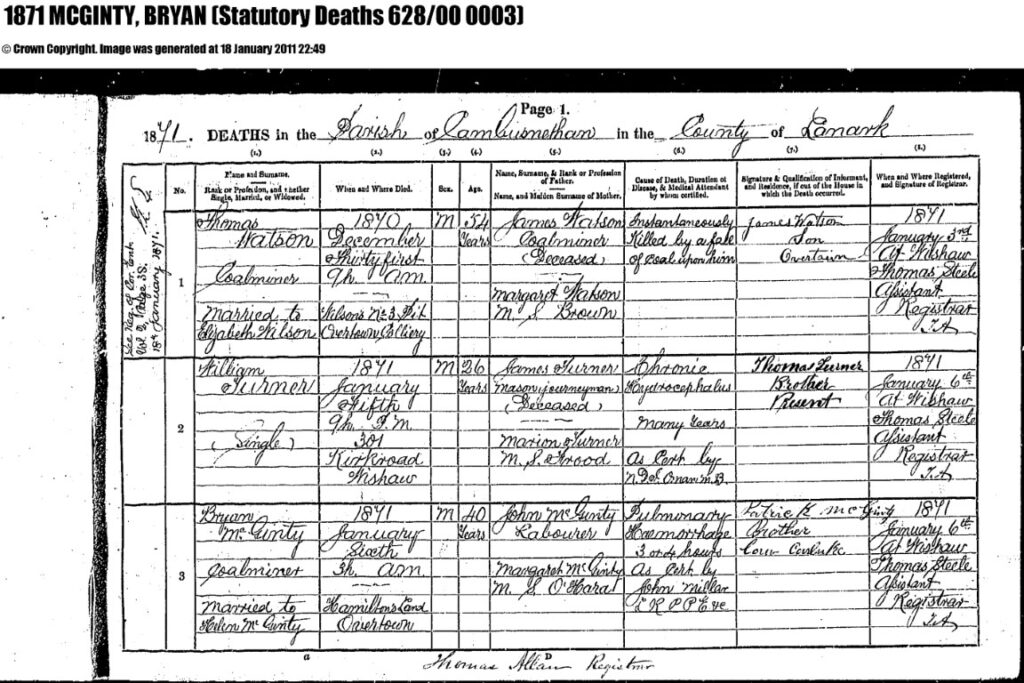 Bryan McGinty 1871 Overtown
Bryan McGinty 1871 Overtown
 Bernard Donlon 1988 Rotherham
Bernard Donlon 1988 Rotherham
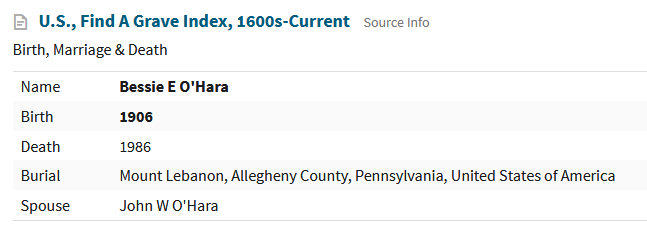 Bessie O’Hara 1986 Pennsylvania
Bessie O’Hara 1986 Pennsylvania
 Elizabeth Temprell 1960 Sheffield
Elizabeth Temprell 1960 Sheffield
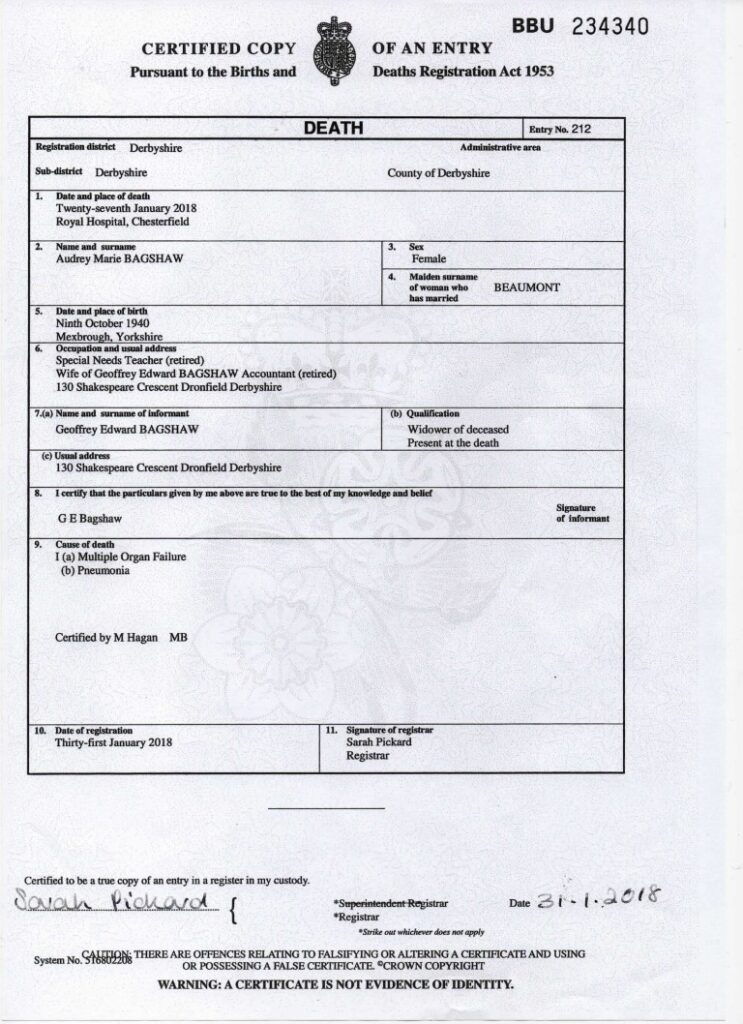 Audrey Beaumont Death Cert
Audrey Beaumont Death Cert
 Charles Lawrence Tyzack 1972 Sheffield
Charles Lawrence Tyzack 1972 Sheffield
 Doris Pridmore 1932 Sheffield
Doris Pridmore 1932 Sheffield
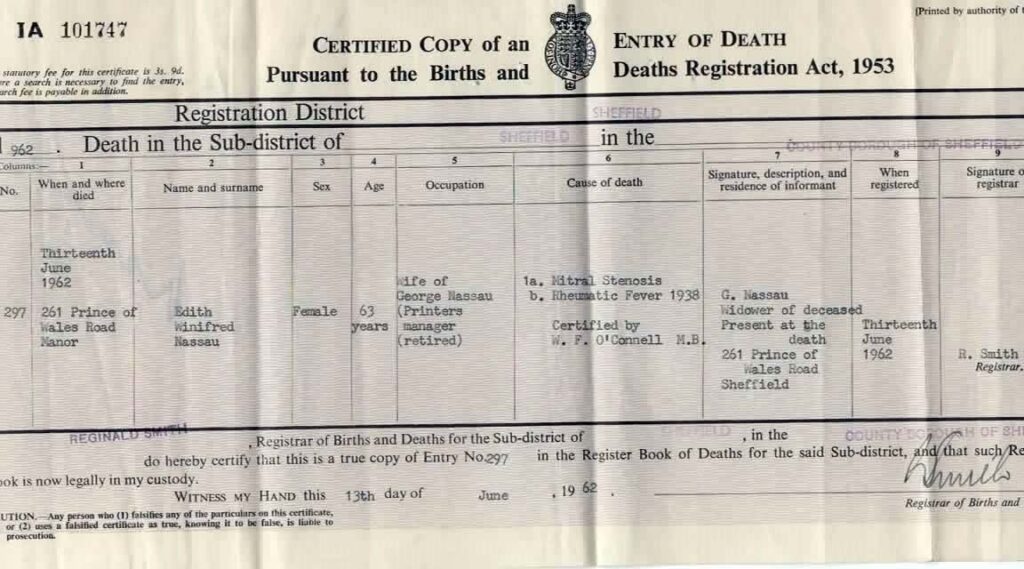 Edith Winifred Nassau 1962 Sheffield
Edith Winifred Nassau 1962 Sheffield
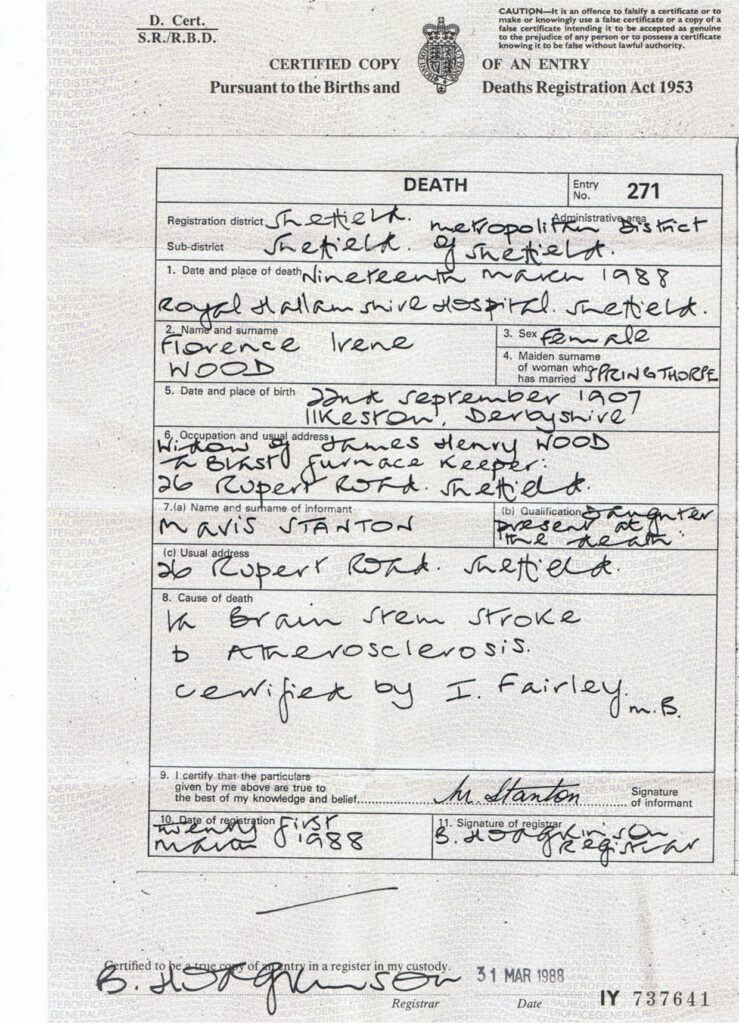 Florence Wood 1988 Sheffield
Florence Wood 1988 Sheffield
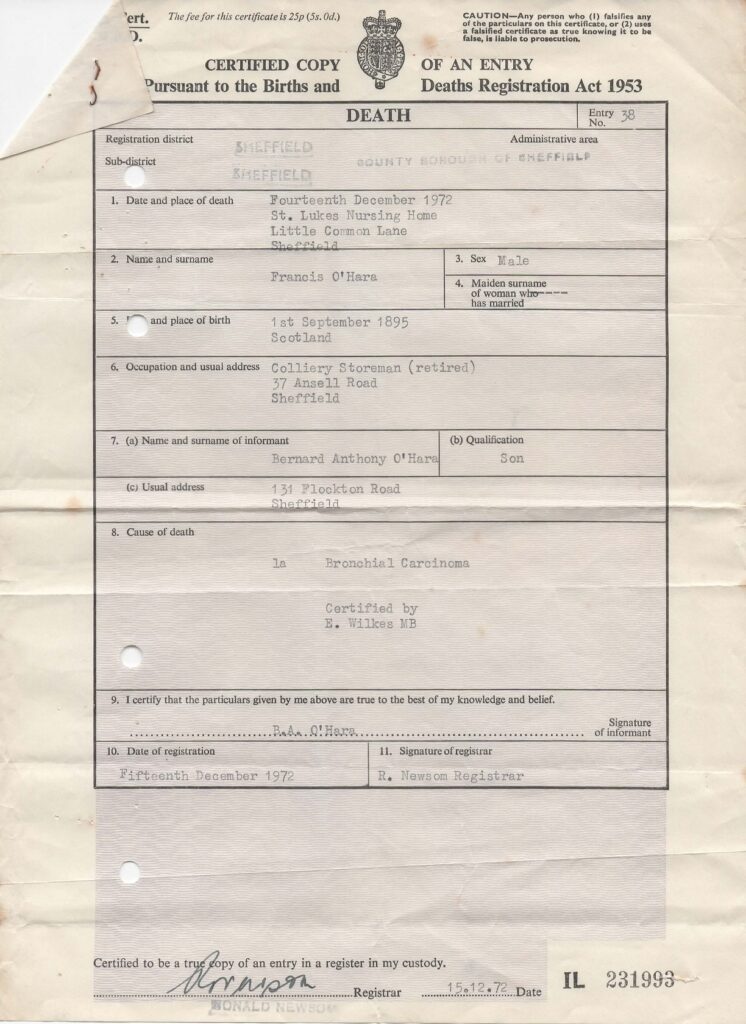 Frank O’Hara 1972 Sheffield
Frank O’Hara 1972 Sheffield
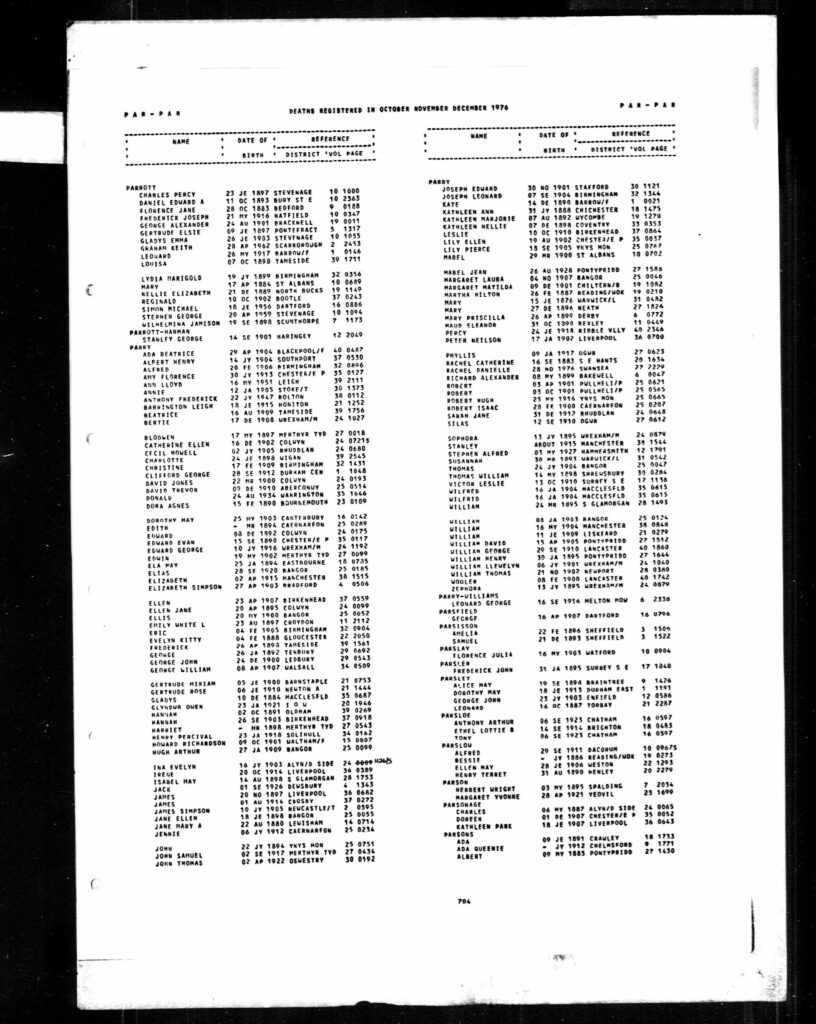 Edward Parry 1976 Colwyn Bay
Edward Parry 1976 Colwyn Bay
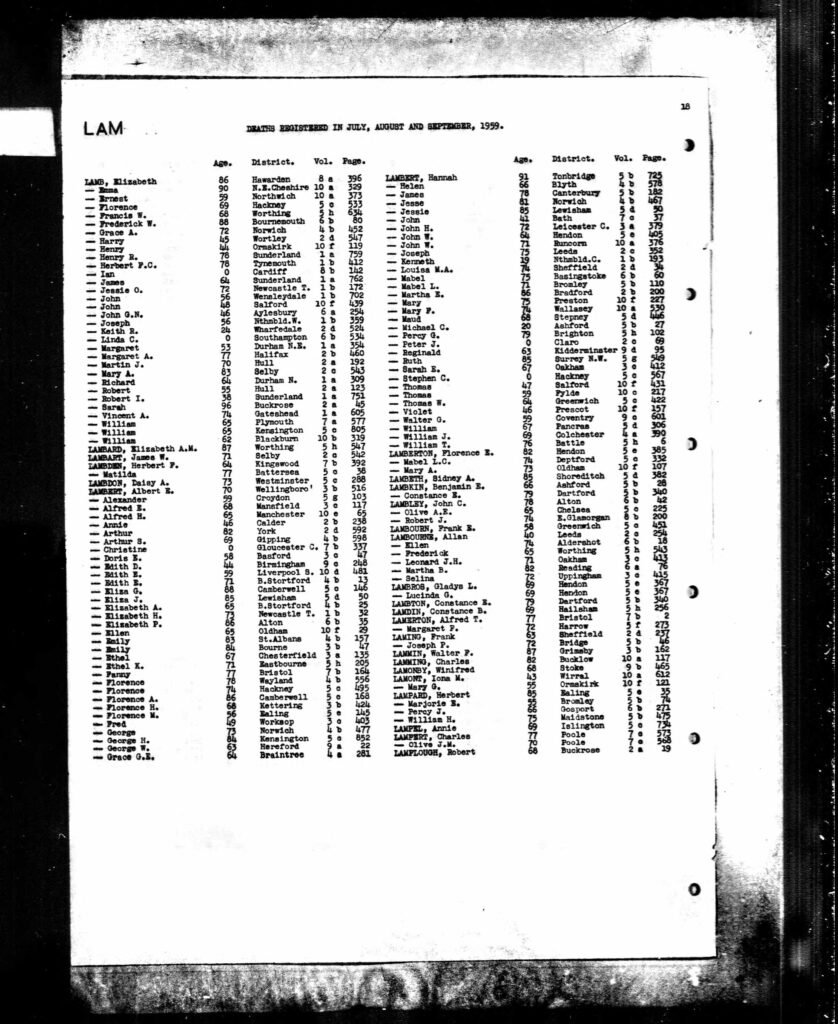 Emily Pridmore Lambert1959 Bourne
Emily Pridmore Lambert1959 Bourne
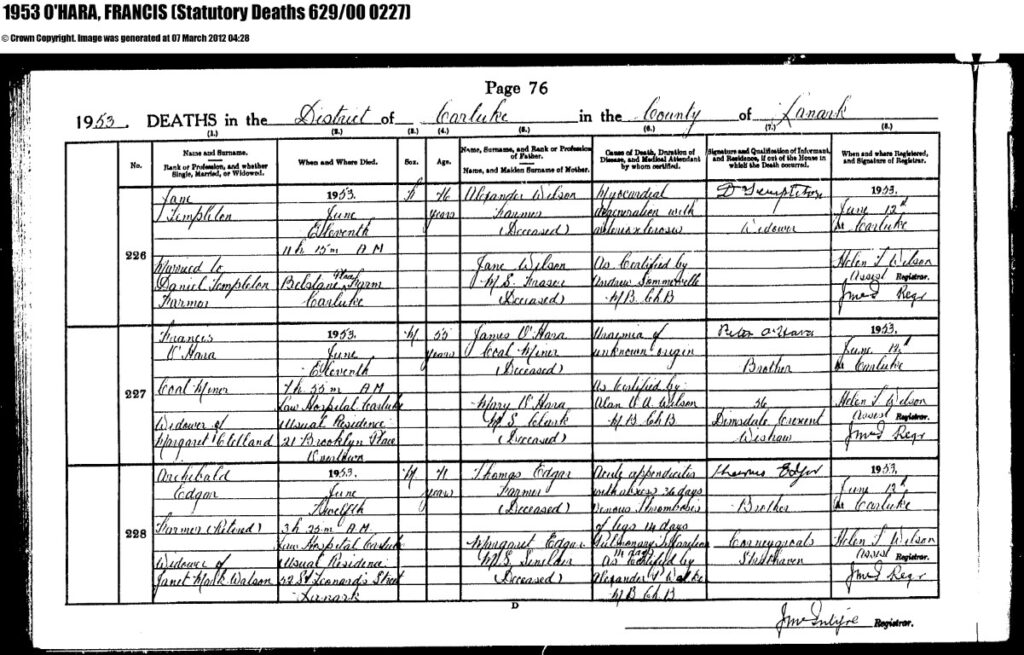 Francis O’Hara 1953 Carluke
Francis O’Hara 1953 Carluke
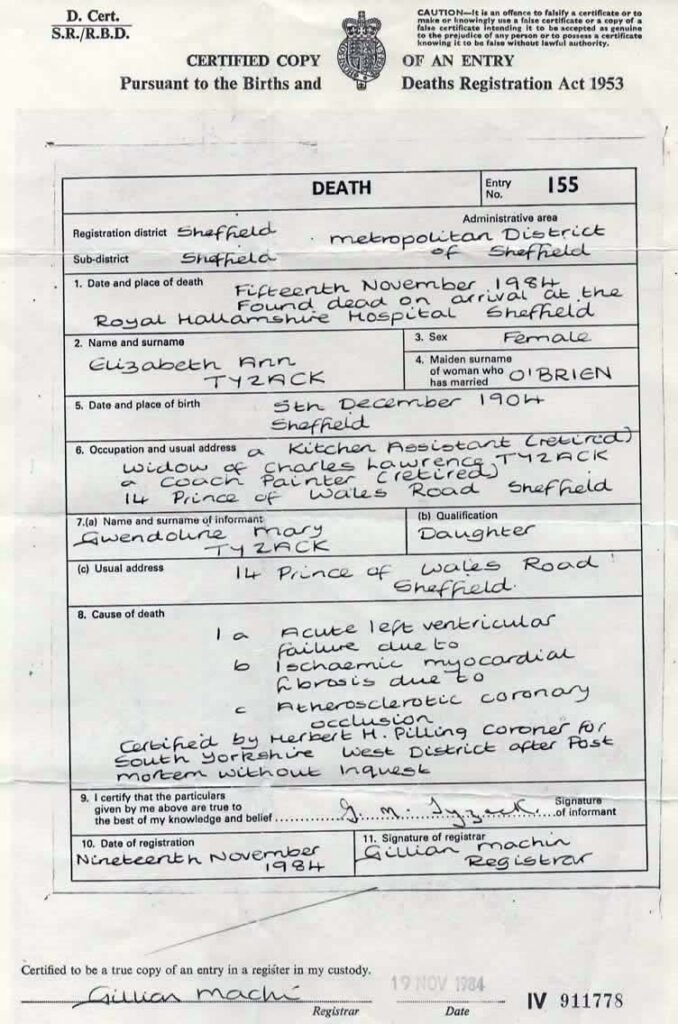 Elizabeth Ann Tyzack 1984 Sheffield
Elizabeth Ann Tyzack 1984 Sheffield
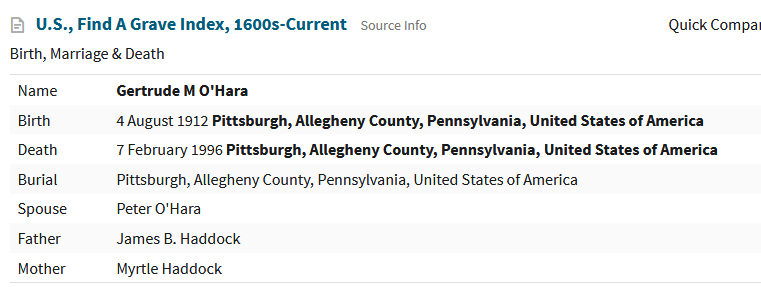 Gertrude Haddock O’Hara 1996 Pennsylvania obit
Gertrude Haddock O’Hara 1996 Pennsylvania obit
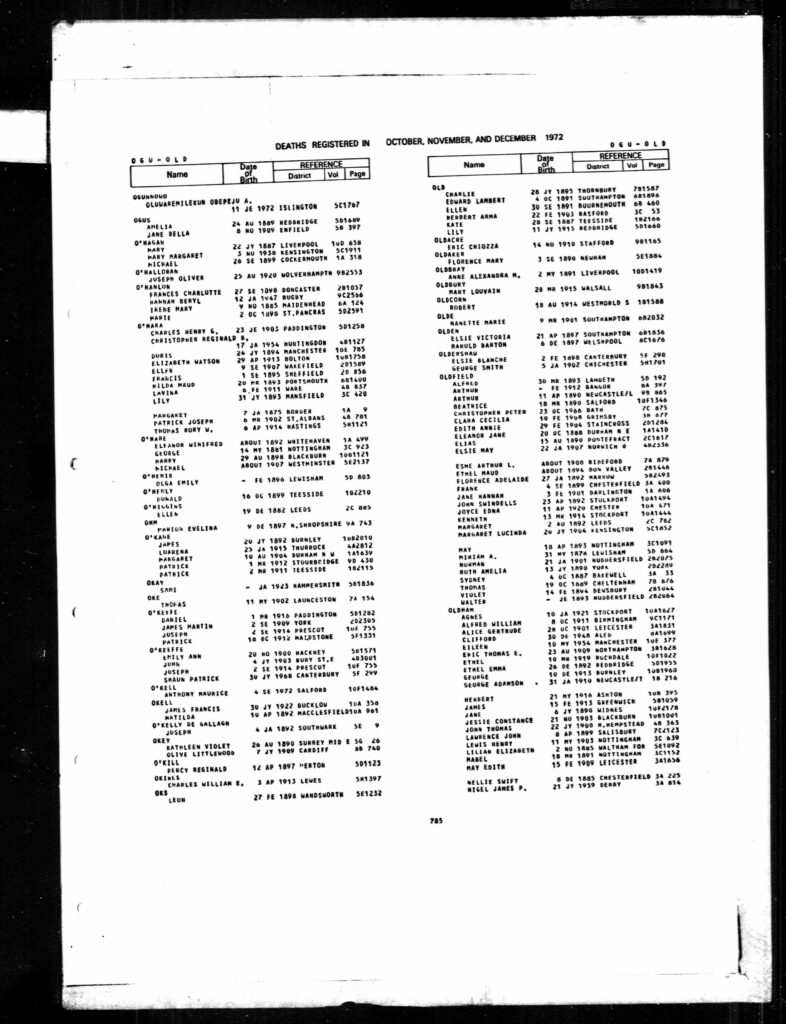 Francis O’Hara 1972 Sheffield reg
Francis O’Hara 1972 Sheffield reg
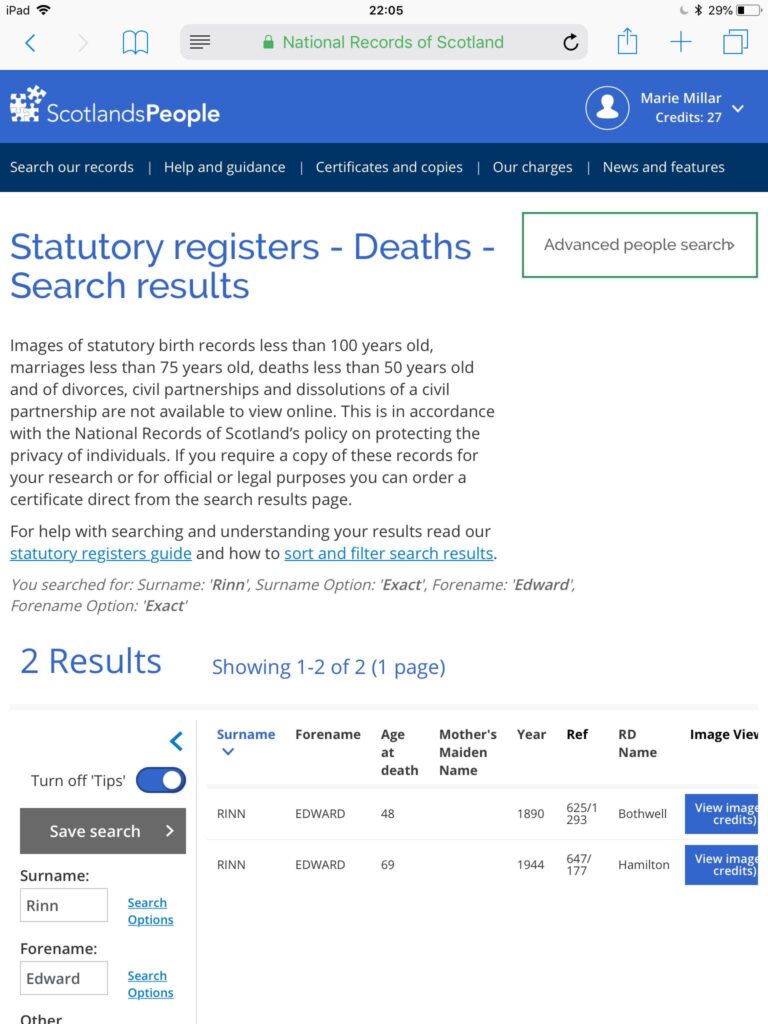 Edward Rinn 1890 Bothwell reg
Edward Rinn 1890 Bothwell reg
 Florence Springthorpe 1968 Ilkeston
Florence Springthorpe 1968 Ilkeston
 Dora E O’Hara 2009 Pennsylvania
Dora E O’Hara 2009 Pennsylvania
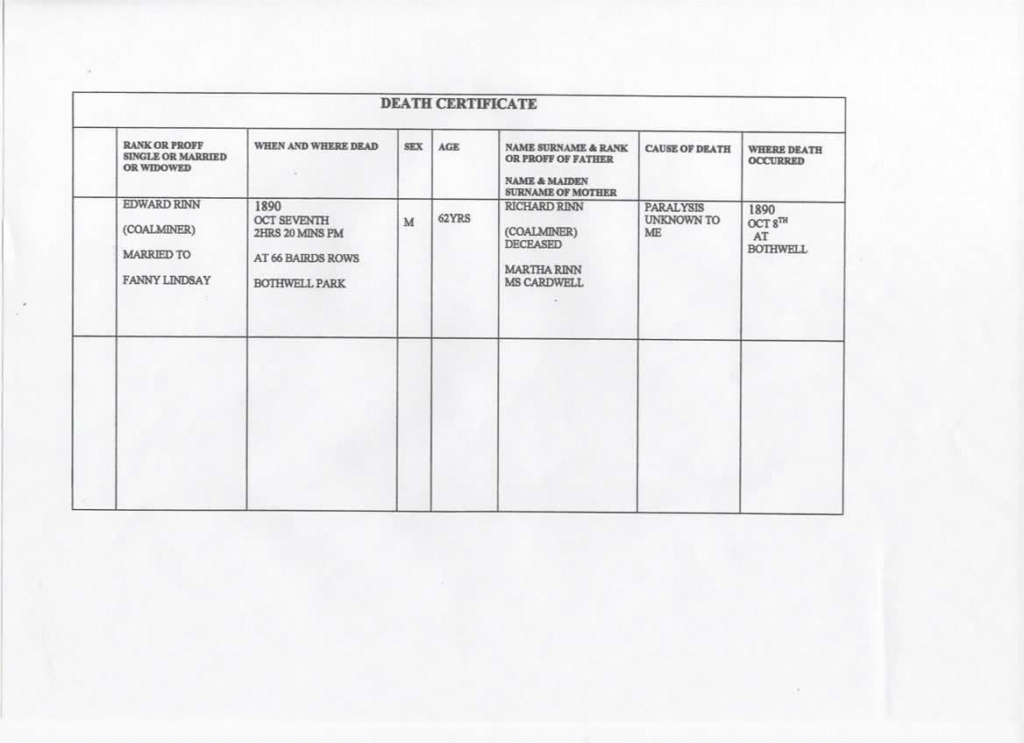 Edward Rinn 1890 Bothwell
Edward Rinn 1890 Bothwell
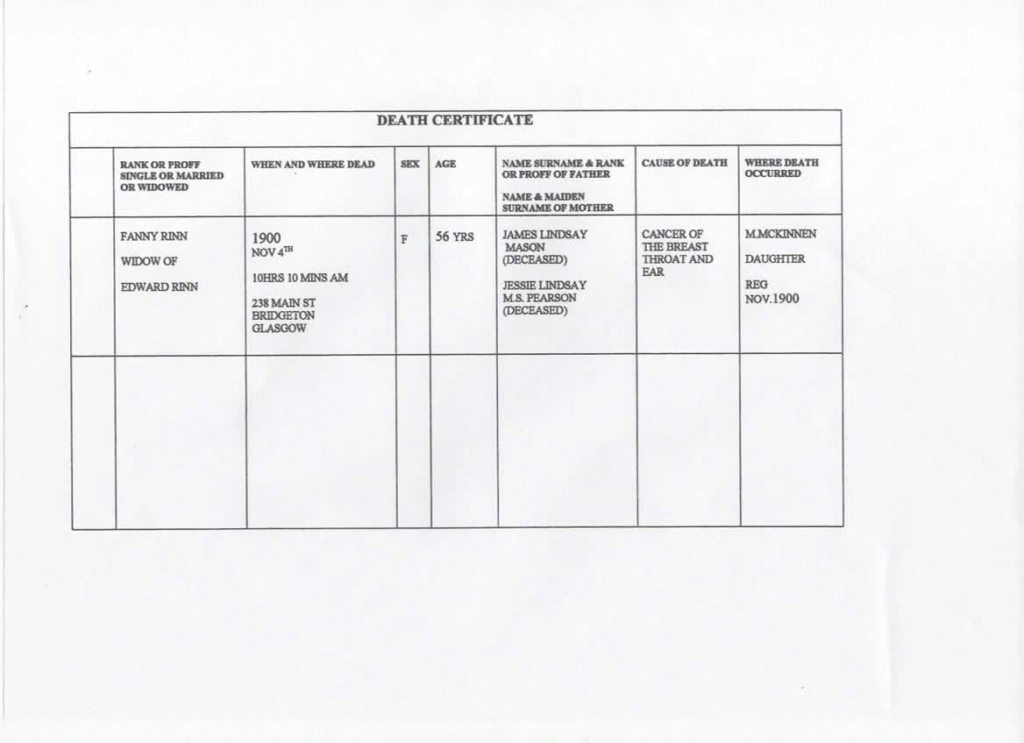 Frances Lindsay 1900 Glasgow
Frances Lindsay 1900 Glasgow
 George Nassau 1968 Sheffield
George Nassau 1968 Sheffield
 George F Pridmore 1953 Ilford
George F Pridmore 1953 Ilford
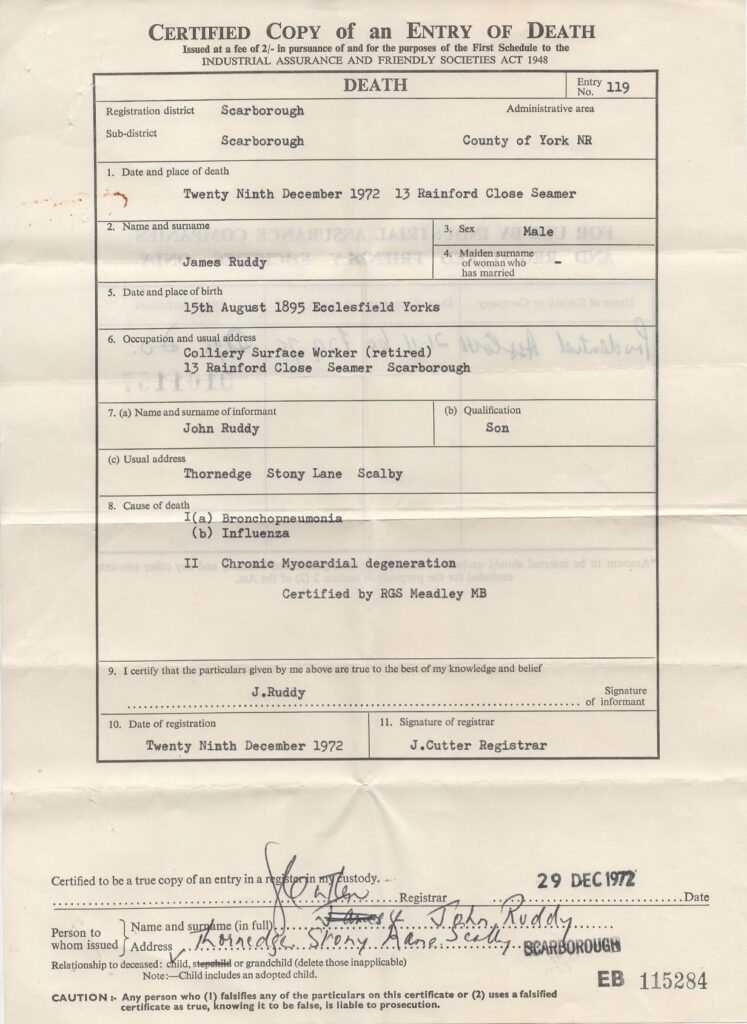 James Ruddy 1972 Scarborough
James Ruddy 1972 Scarborough
 John Ruddy 2000 Cottingham
John Ruddy 2000 Cottingham
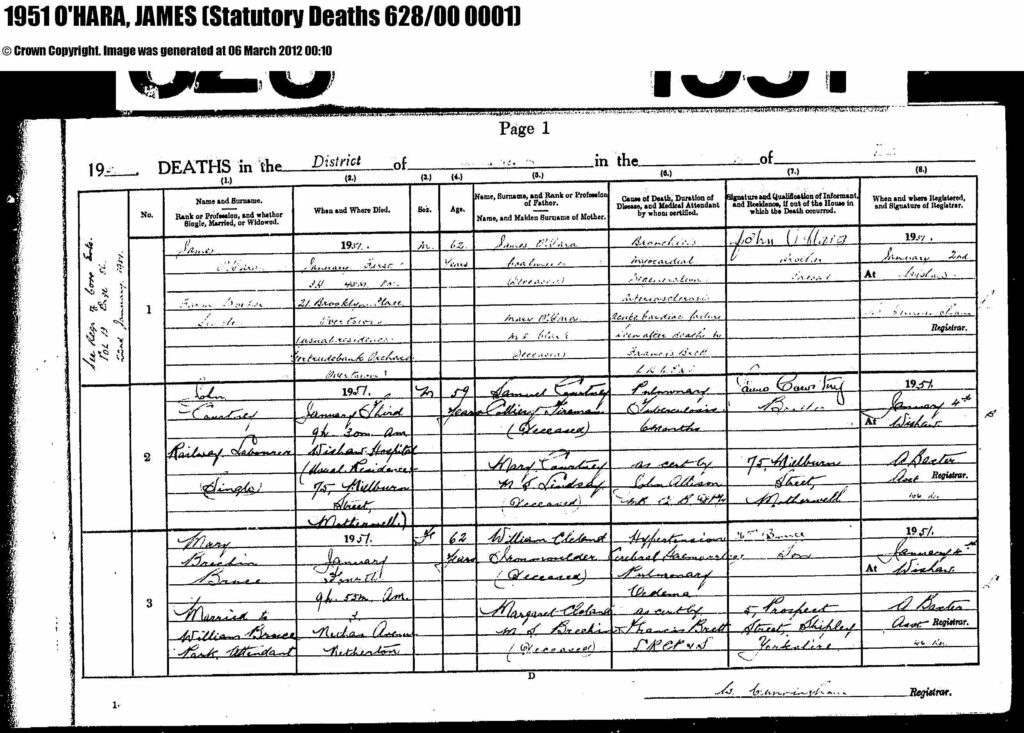 James O’Hara 1951 Overtown
James O’Hara 1951 Overtown
 Mary McMurray 1909 Larkhall Lanarkshire
Mary McMurray 1909 Larkhall Lanarkshire
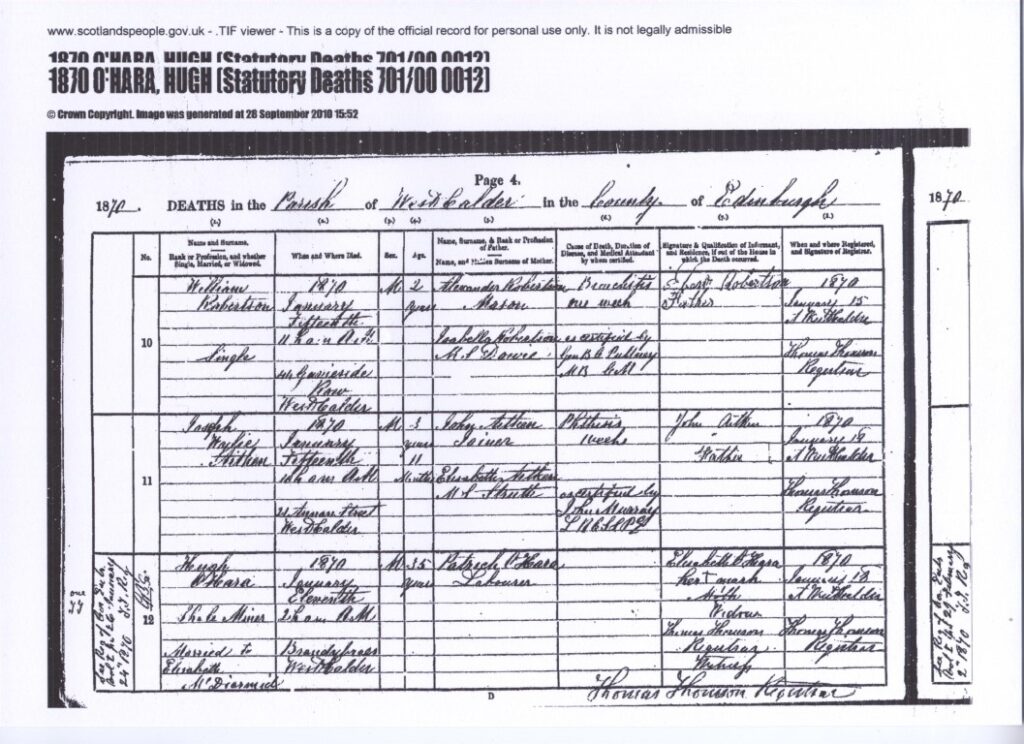 Hugh O’Hara 1870 West Calder register
Hugh O’Hara 1870 West Calder register
 Gertrude Parry 1980 St Asaph
Gertrude Parry 1980 St Asaph
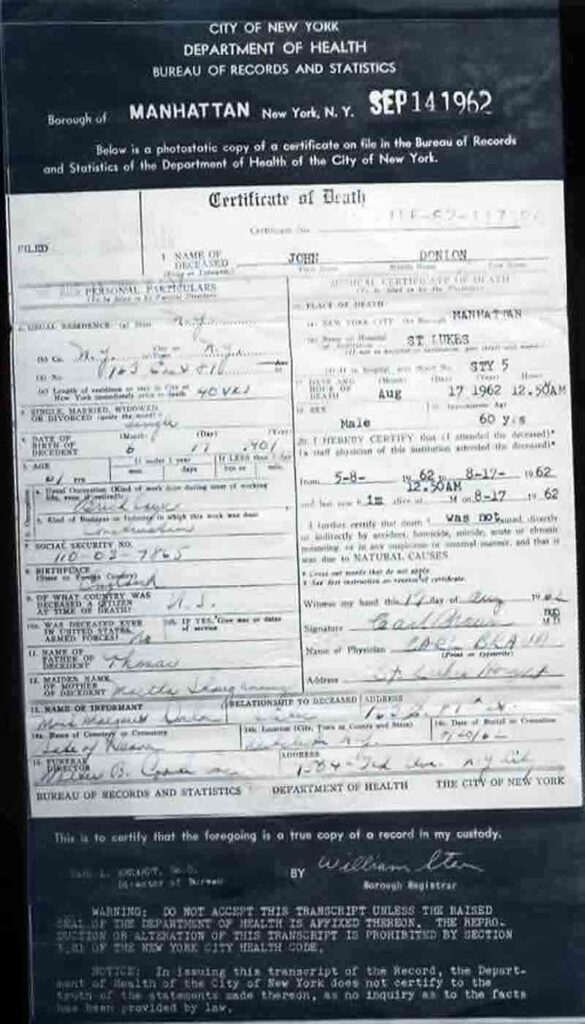 John Donnellan 1962 Manhattan New York
John Donnellan 1962 Manhattan New York
 Hugh O’Hara 1870 West Calder, Edinburgh
Hugh O’Hara 1870 West Calder, Edinburgh
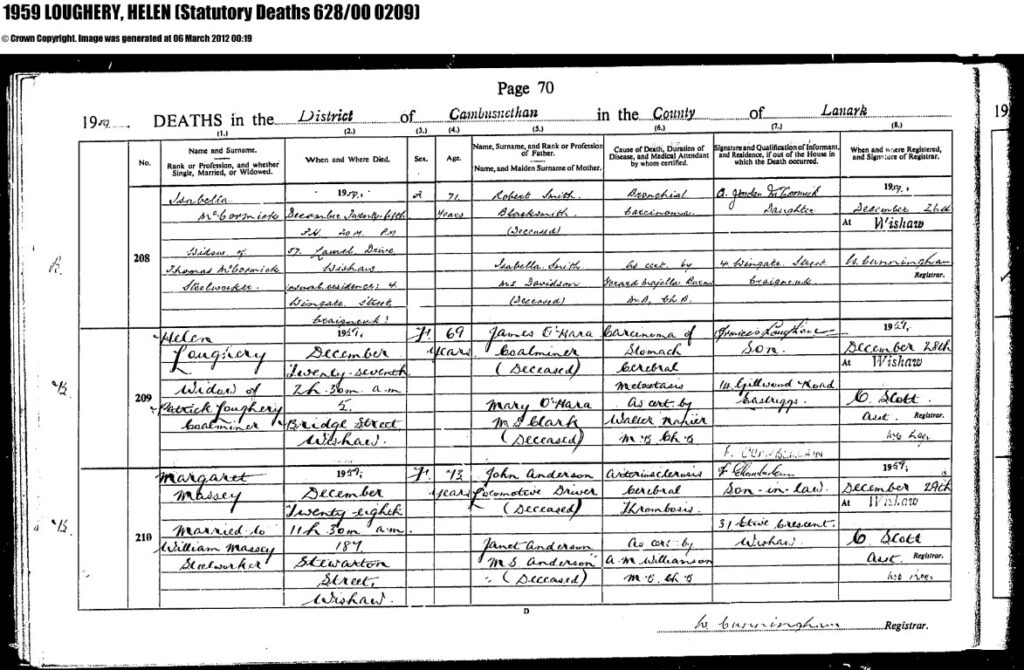 Helen O’Hara 1959 Wishaw
Helen O’Hara 1959 Wishaw
 Harriet York 1903 Western Australia
Harriet York 1903 Western Australia
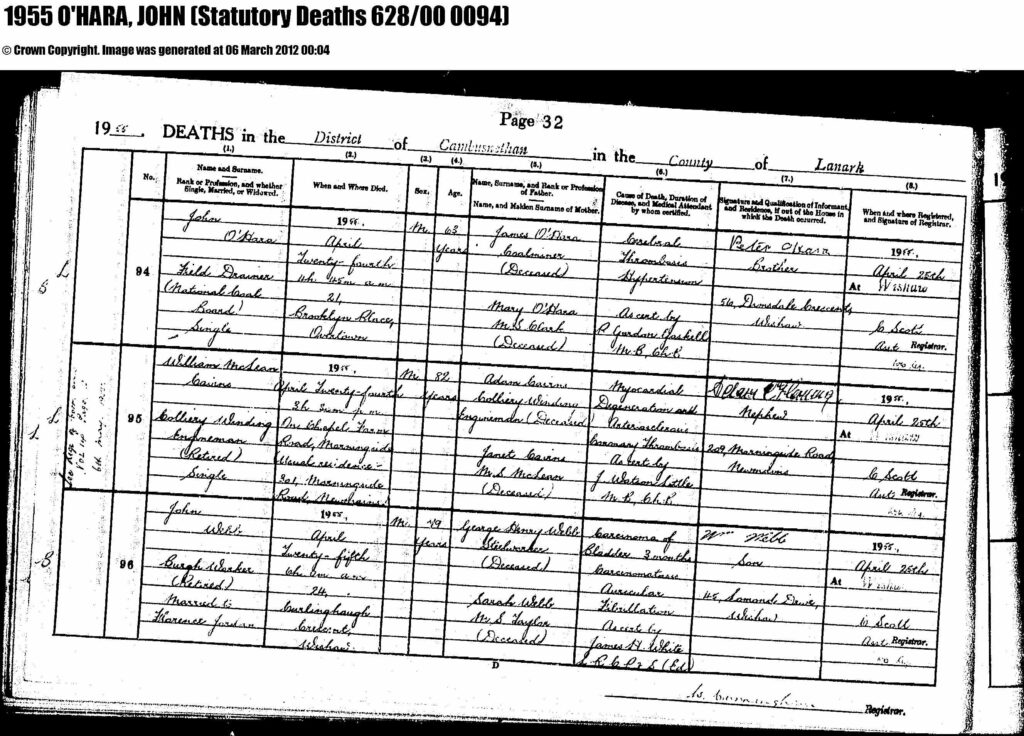 John O’Hara 1955 Cambusnethan
John O’Hara 1955 Cambusnethan
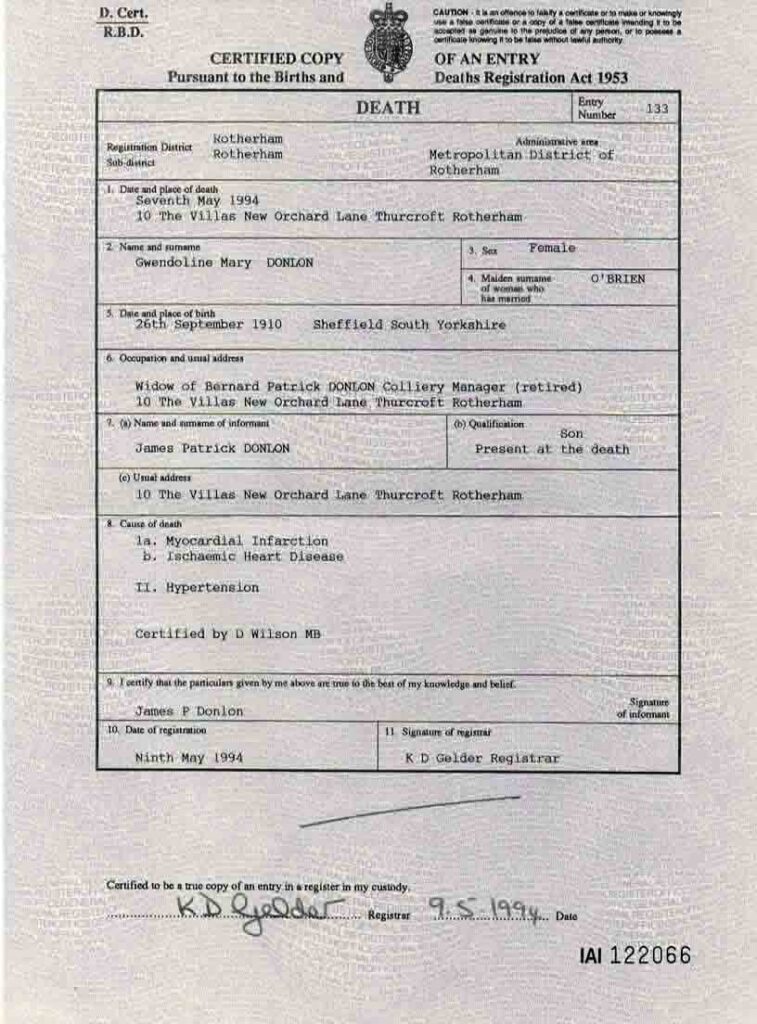 Gwendoline O’Brien 1994 Sheffield
Gwendoline O’Brien 1994 Sheffield
 Henry Pridmore 1940 Melbourne Australia
Henry Pridmore 1940 Melbourne Australia
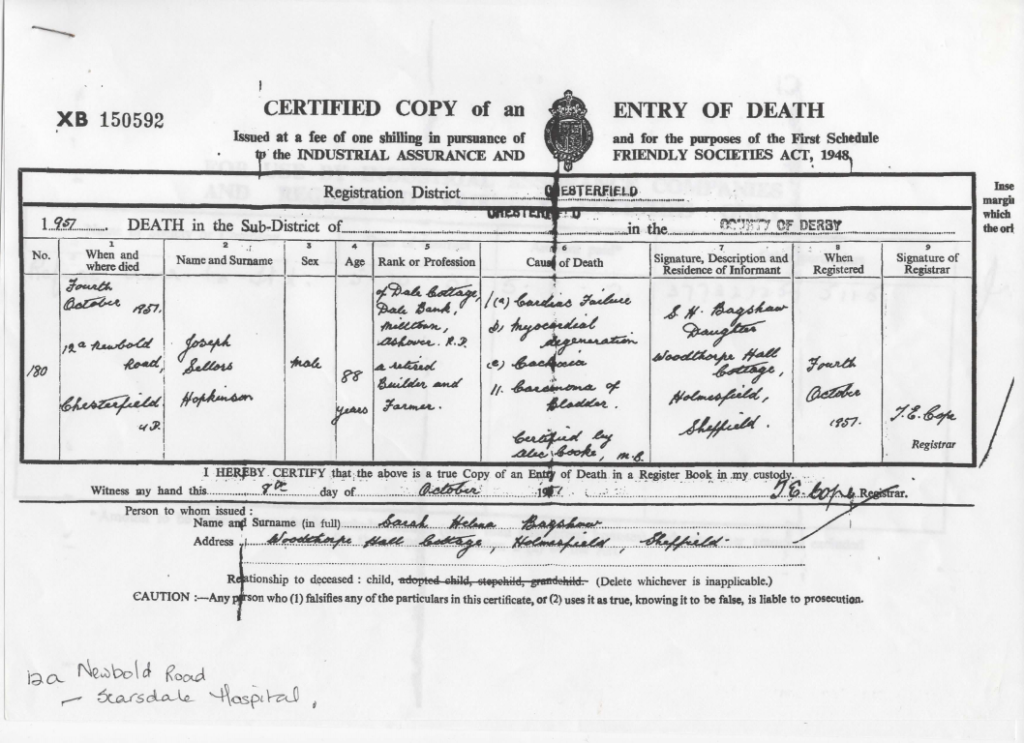 Joseph Sellors Hopkinson 1951 Chesterfield
Joseph Sellors Hopkinson 1951 Chesterfield
 Margaret Ellen Fleming 1978 Sheffield
Margaret Ellen Fleming 1978 Sheffield
 John O’Hara 1877 Gorbals
John O’Hara 1877 Gorbals
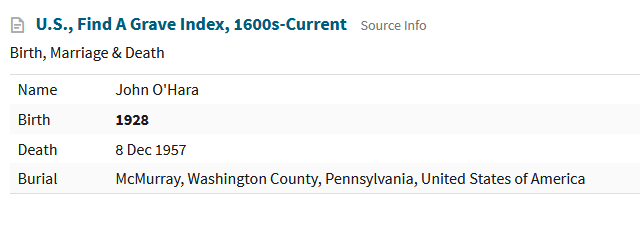 John O’Hara 1957 Pennsylvania
John O’Hara 1957 Pennsylvania
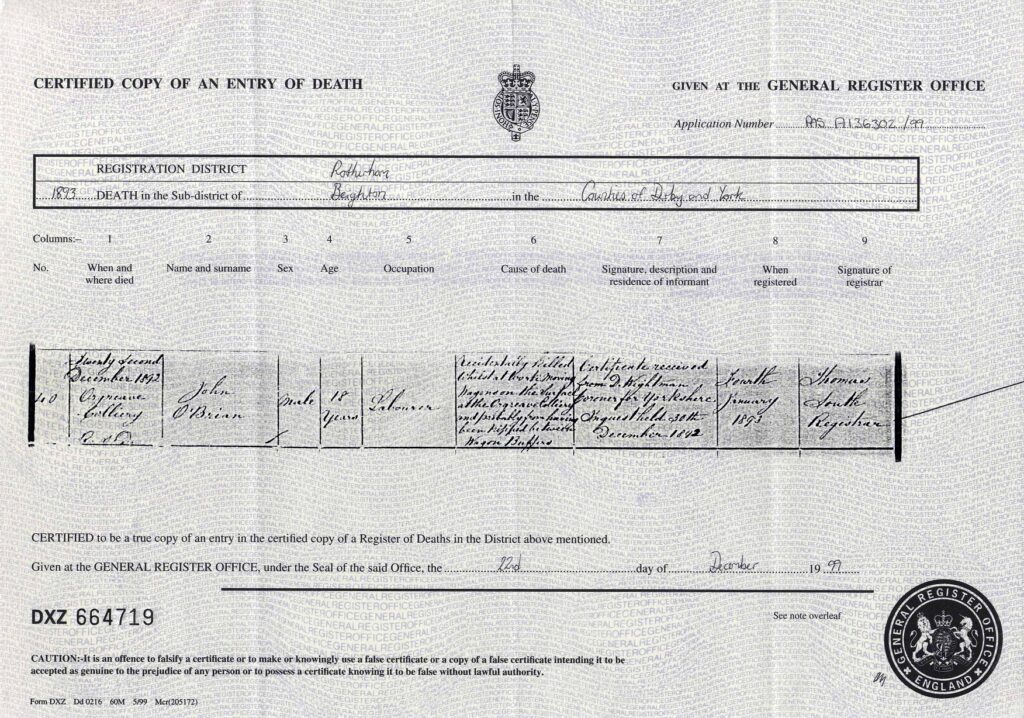 John O’Brien 1892 Beighton, Rotherham
John O’Brien 1892 Beighton, Rotherham
 Joseph O’Hara 1946 Glasgow
Joseph O’Hara 1946 Glasgow
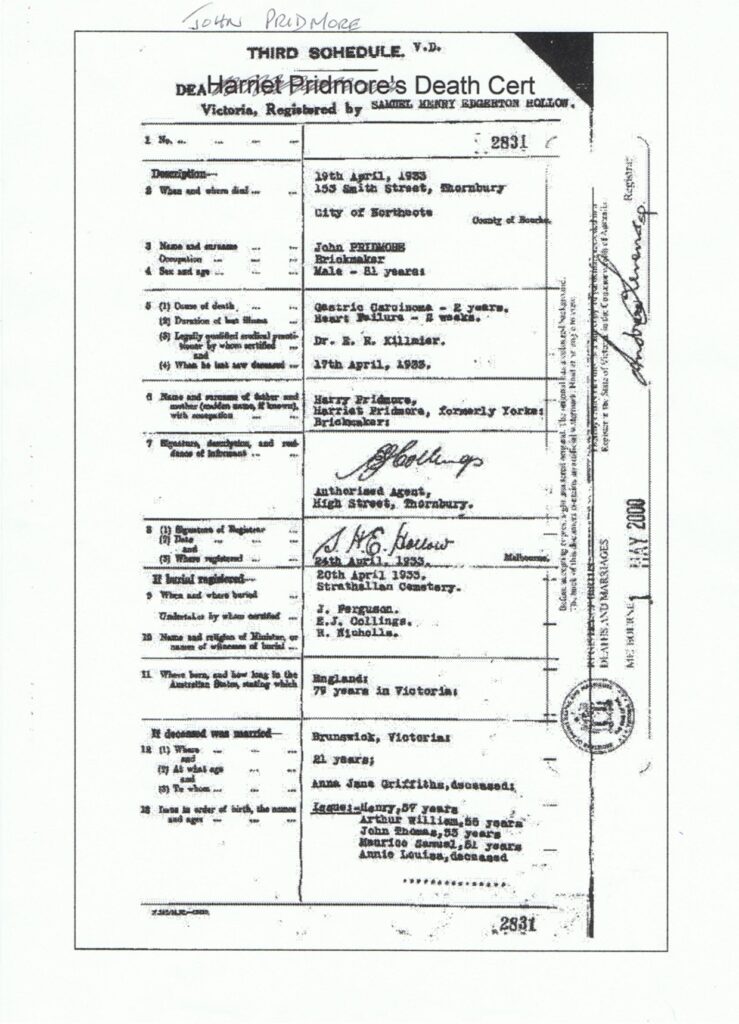 John Pridmore 1933 Victoria Australia
John Pridmore 1933 Victoria Australia
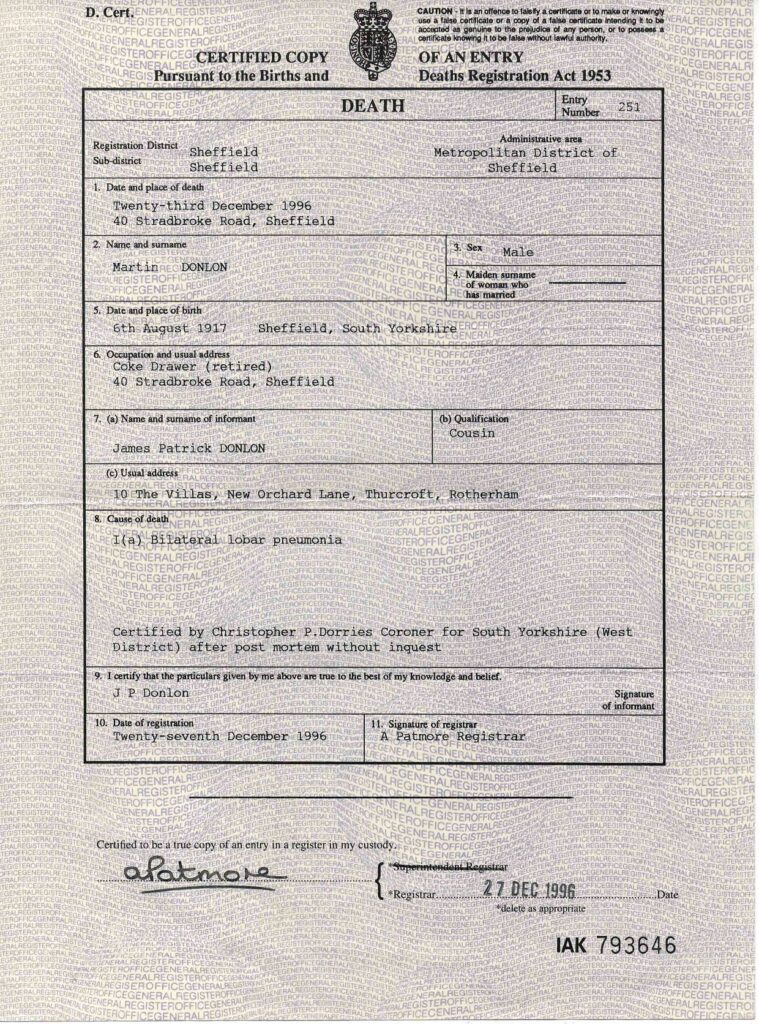 Martin Donlon 1996 Sheffield
Martin Donlon 1996 Sheffield
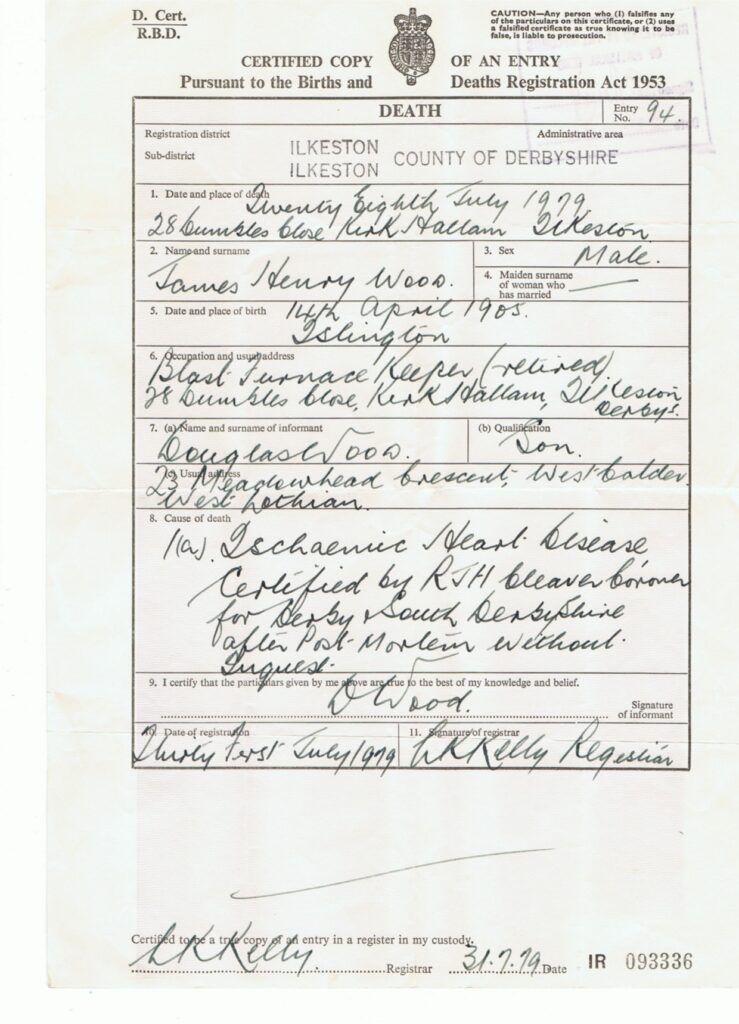 James Wood 1979 Ilkeston
James Wood 1979 Ilkeston
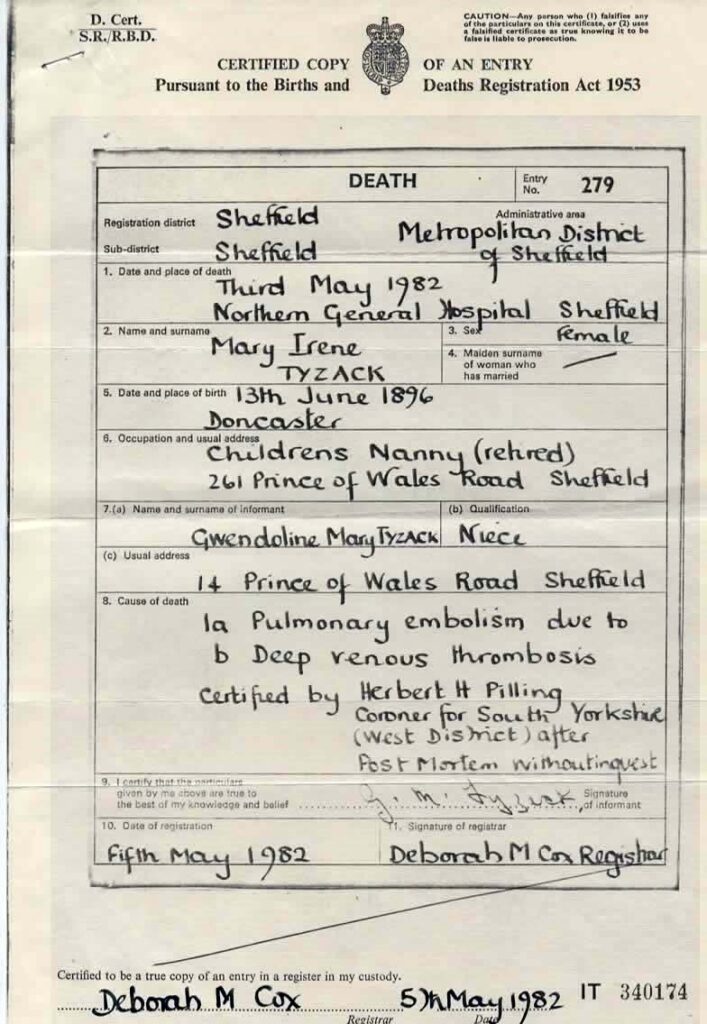 Mary Irene Tyzack 1982 Sheffield
Mary Irene Tyzack 1982 Sheffield
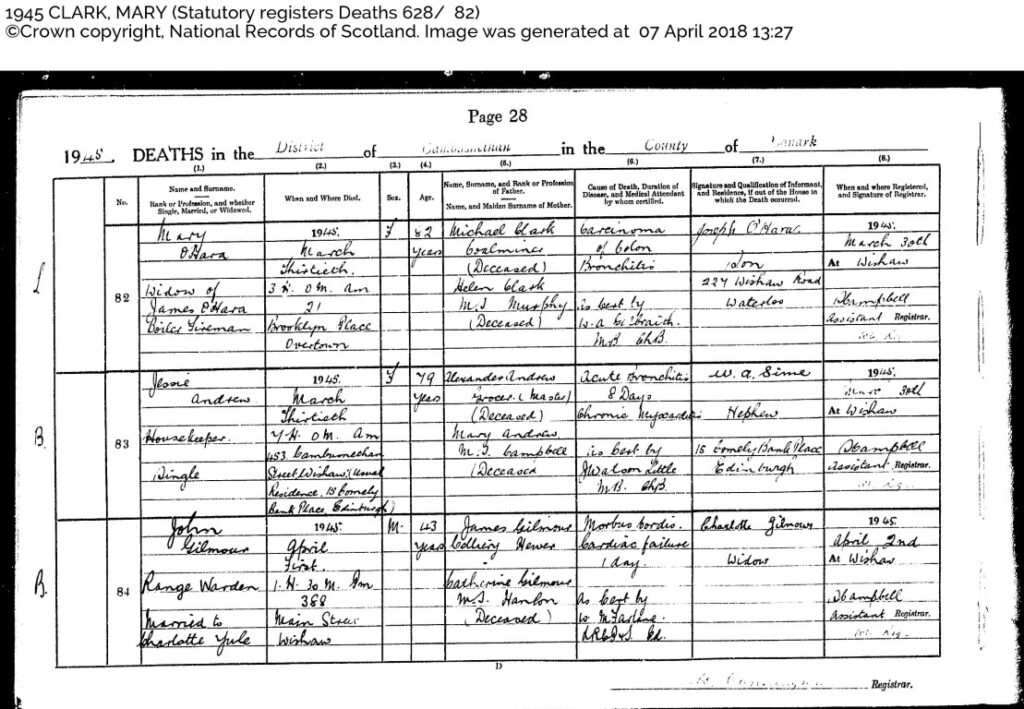 Mary Clark 1945 Overtown
Mary Clark 1945 Overtown
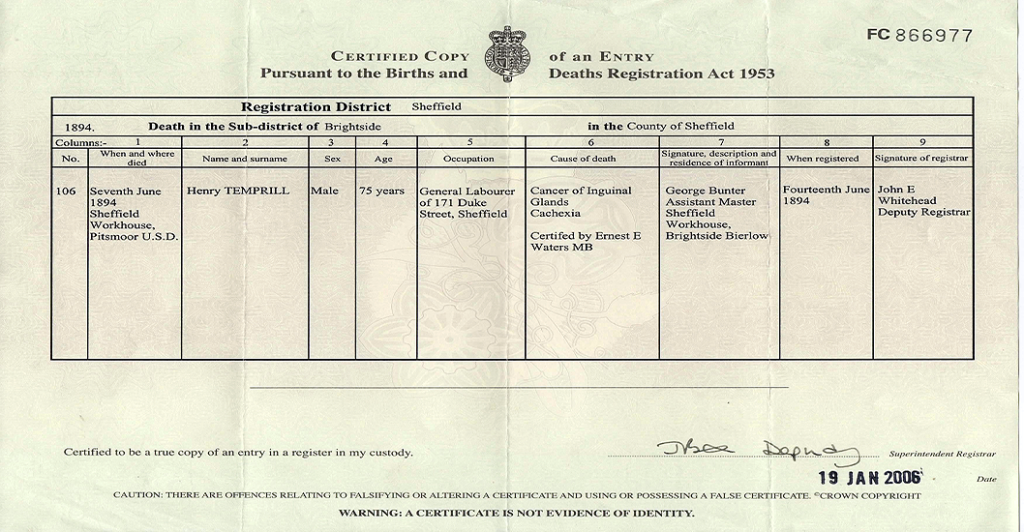 Henry Temprell 1894 Sheffield Workhouse
Henry Temprell 1894 Sheffield Workhouse
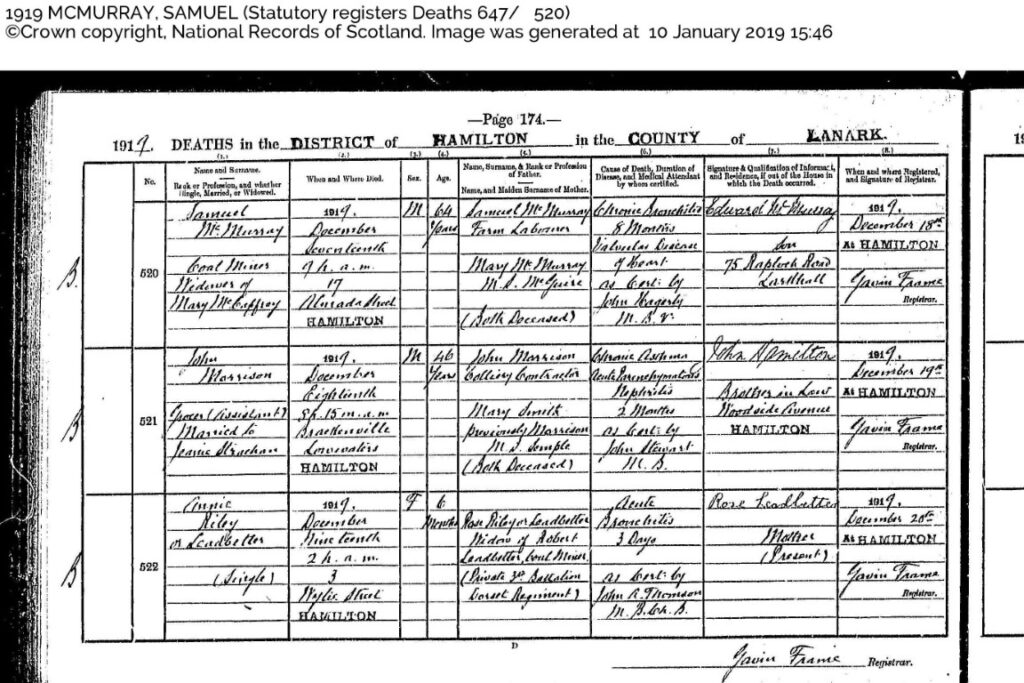 Samuel McMurray 1819 Hamilton
Samuel McMurray 1819 Hamilton
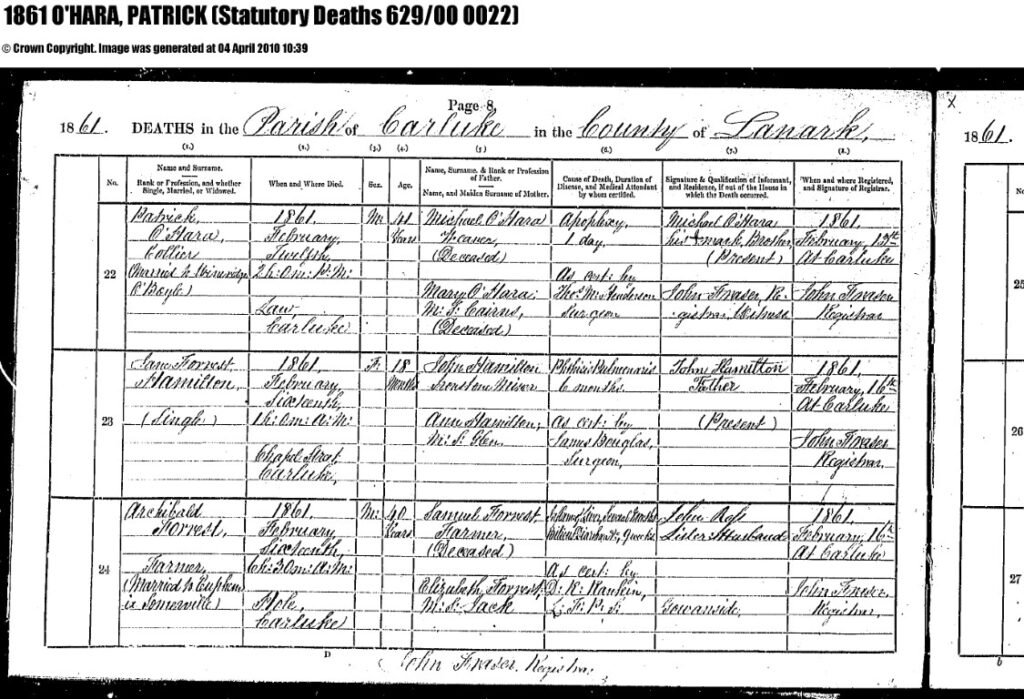 Peter (Patrick) O’Hara 1861 Carluke
Peter (Patrick) O’Hara 1861 Carluke
 Ronald Bagshaw 1950 Aldridge Stafford
Ronald Bagshaw 1950 Aldridge Stafford
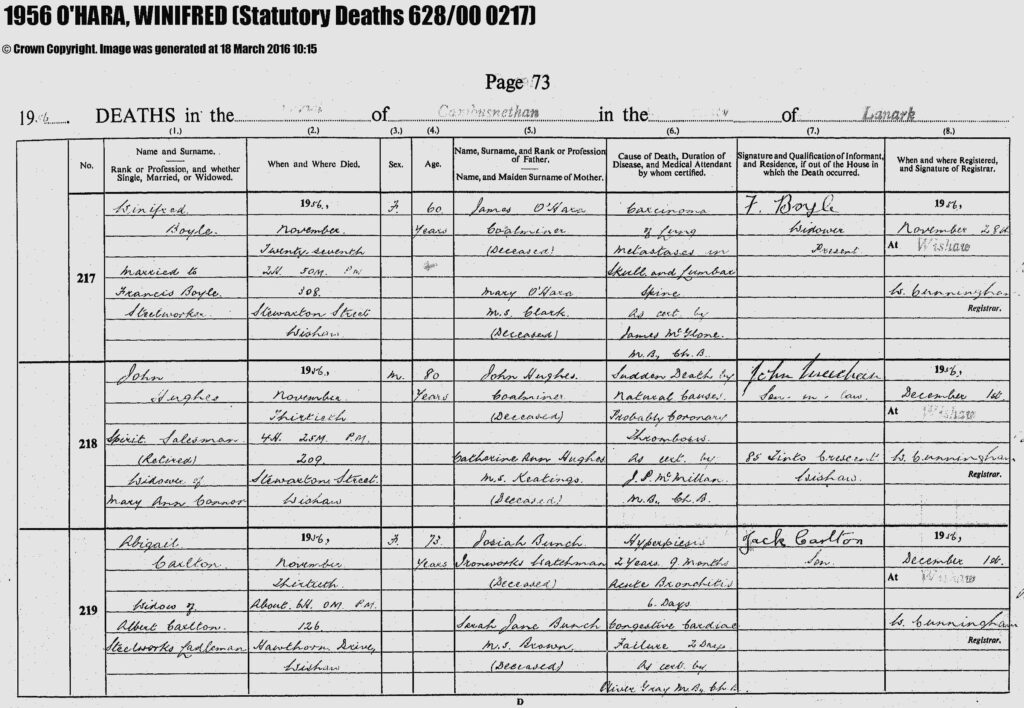 Winifred O’Hara 1956 Cambusnethan
Winifred O’Hara 1956 Cambusnethan
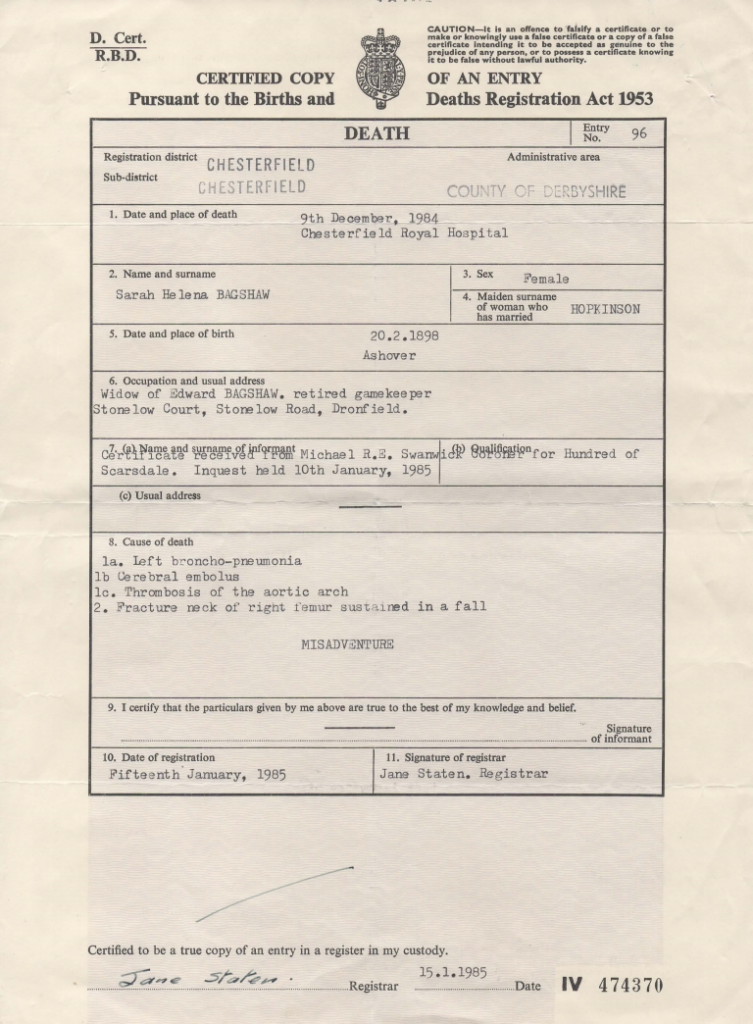 Sarah Helena Hopkinson 1984 Chesterfield
Sarah Helena Hopkinson 1984 Chesterfield
 William Twidale Bagshaw 1945 Sheffield
William Twidale Bagshaw 1945 Sheffield
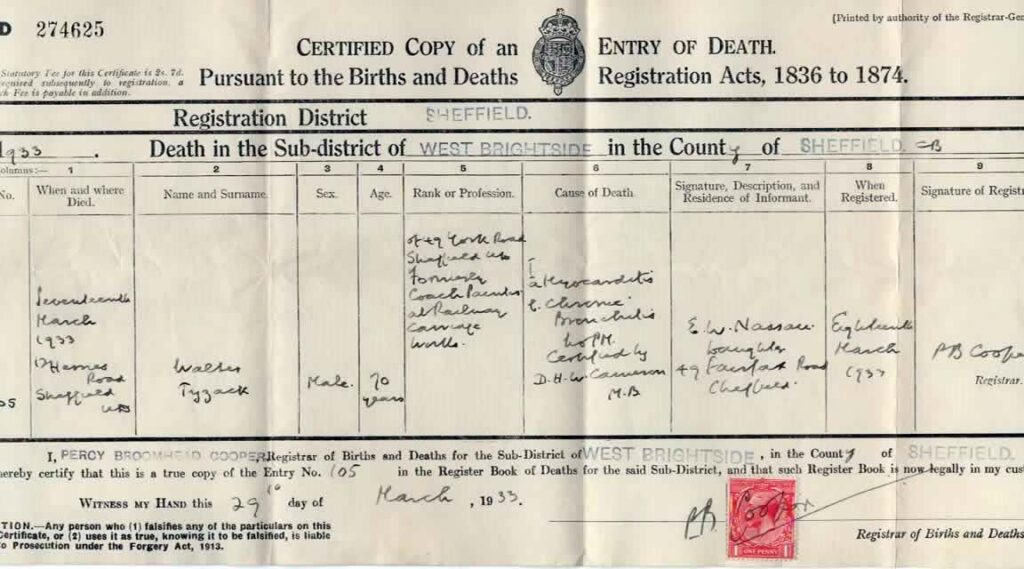 Walter Tyzack 1933 Sheffield
Walter Tyzack 1933 Sheffield
 Patrick McGinty 1918 Lanark
Patrick McGinty 1918 Lanark
 Ruth Gill 1871 Wakefield
Ruth Gill 1871 Wakefield
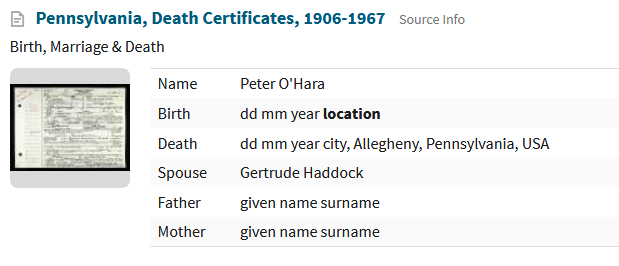 Peter O’Hara Gertrude Haddock Pennsylvania
Peter O’Hara Gertrude Haddock Pennsylvania
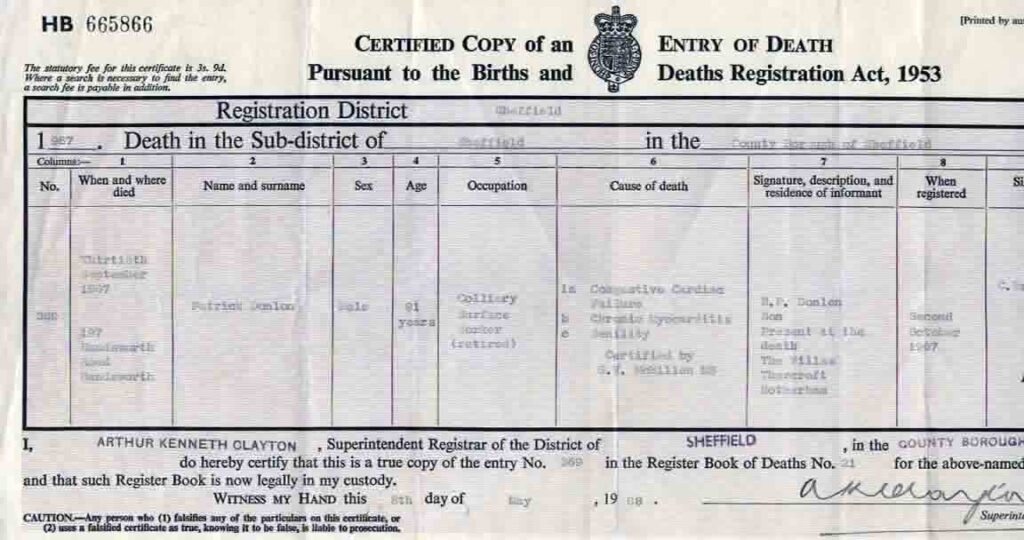 Patrick Donnellan 1967 Sheffield
Patrick Donnellan 1967 Sheffield
 Thomas John Parry 1967 Holywell
Thomas John Parry 1967 Holywell
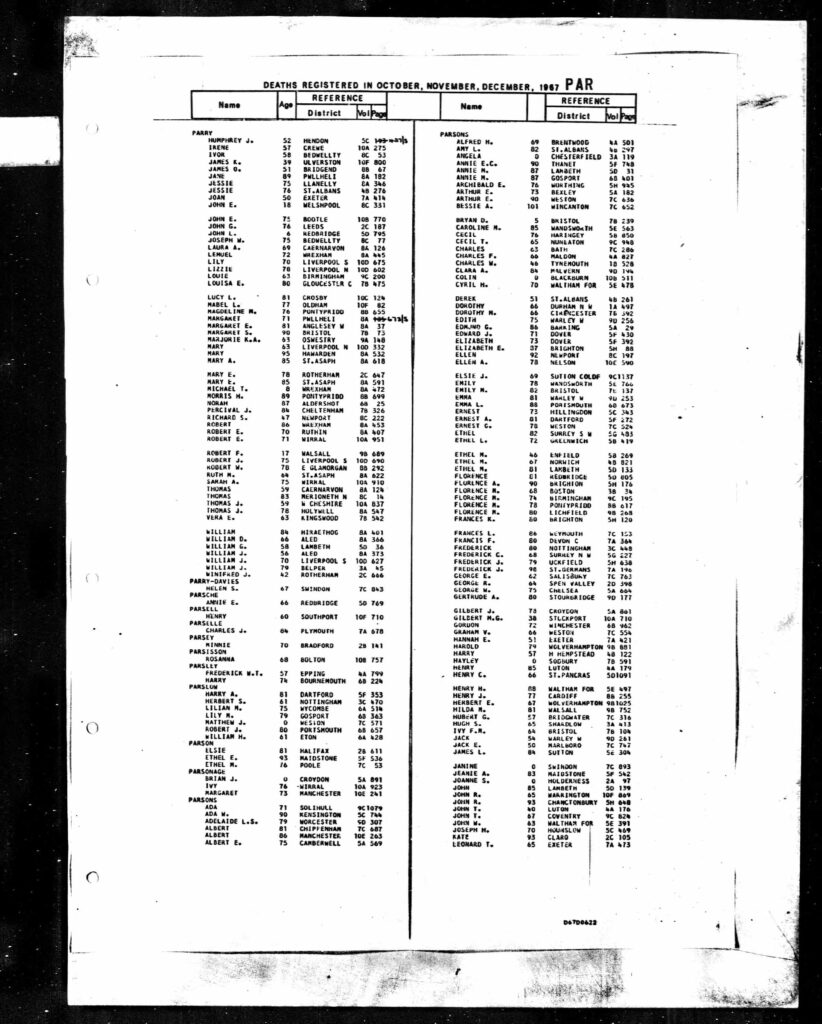 Parry deaths 1967
Parry deaths 1967
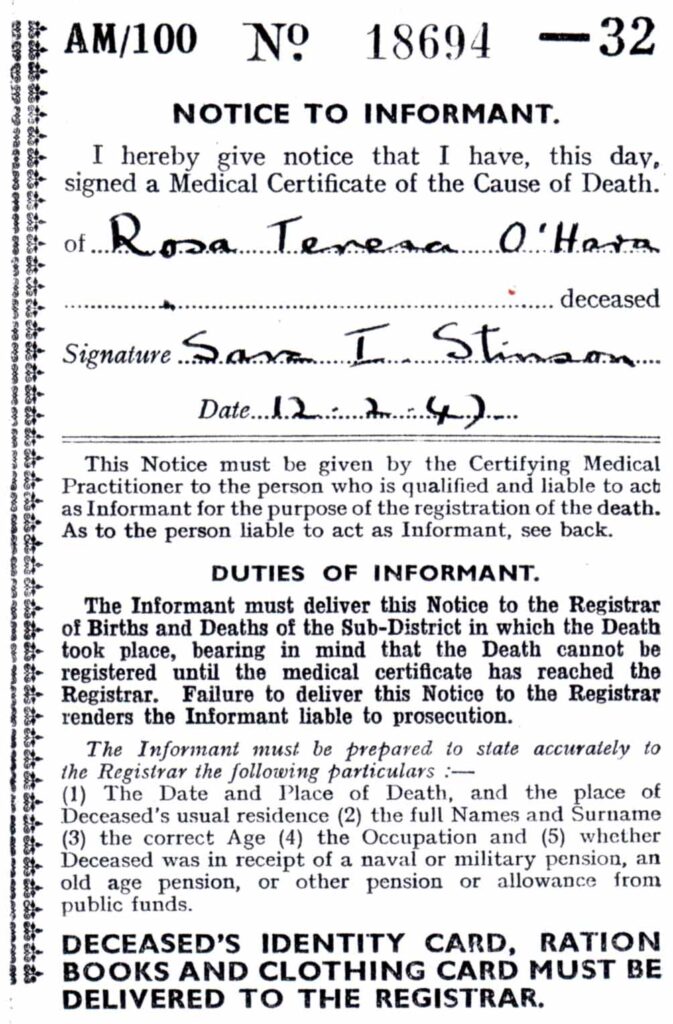 Rose Teresa O’Hara 1947 Beighton Rotherham
Rose Teresa O’Hara 1947 Beighton Rotherham
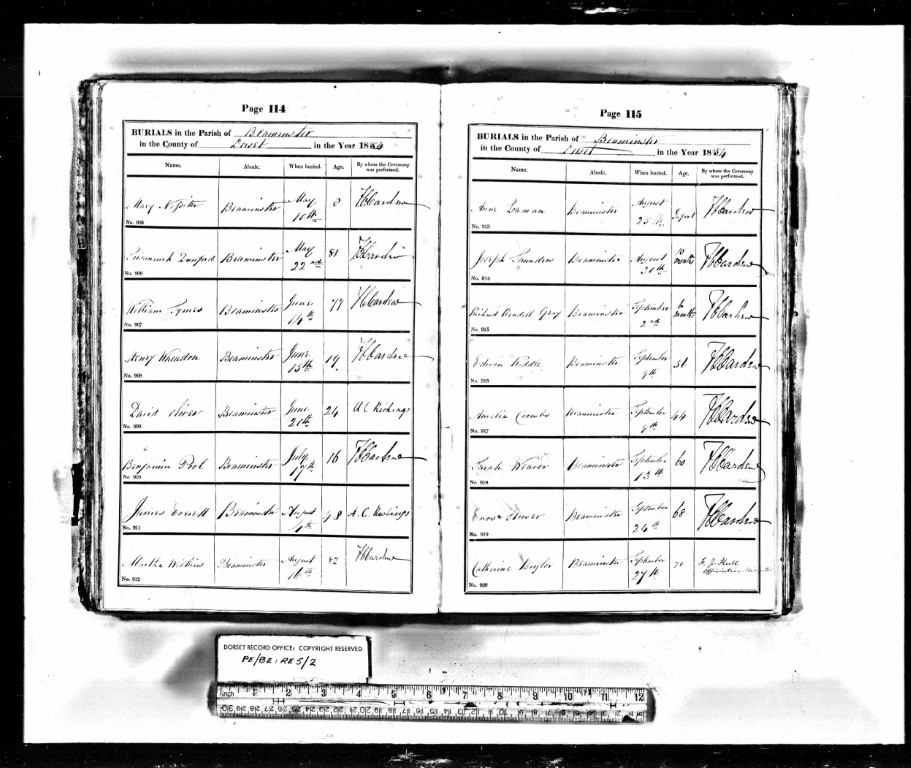 Sarah Weaver 1854 Beaminster
Sarah Weaver 1854 Beaminster
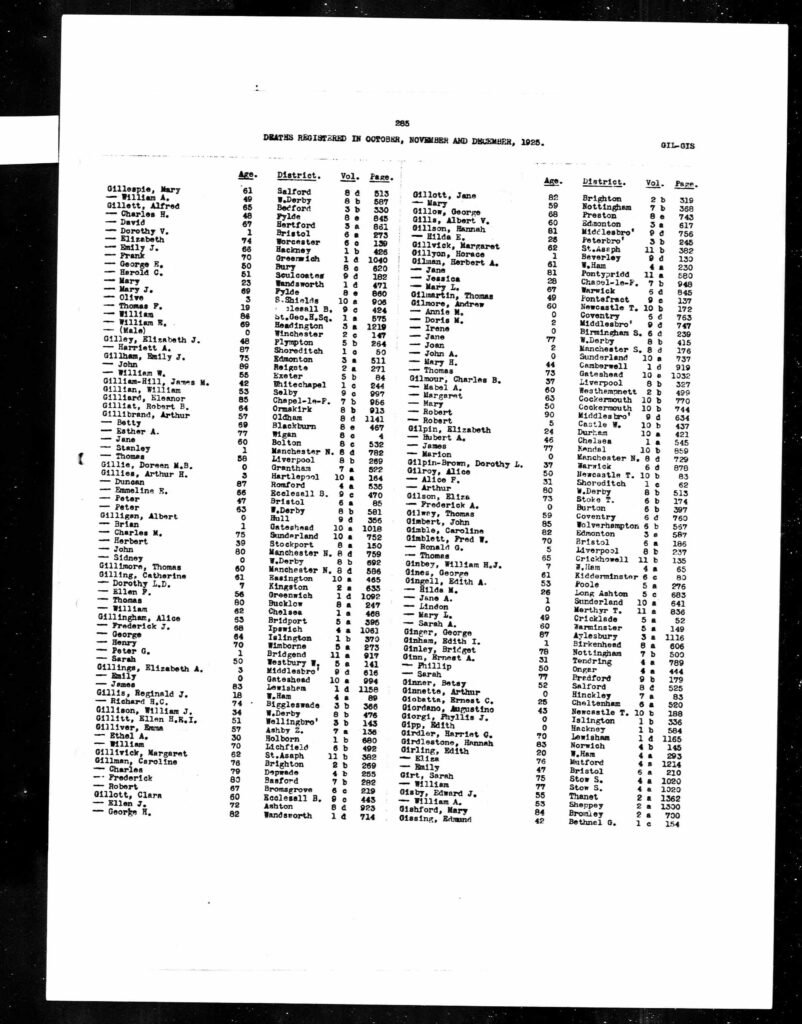 Thomas Gilway 1925 Coventry
Thomas Gilway 1925 Coventry
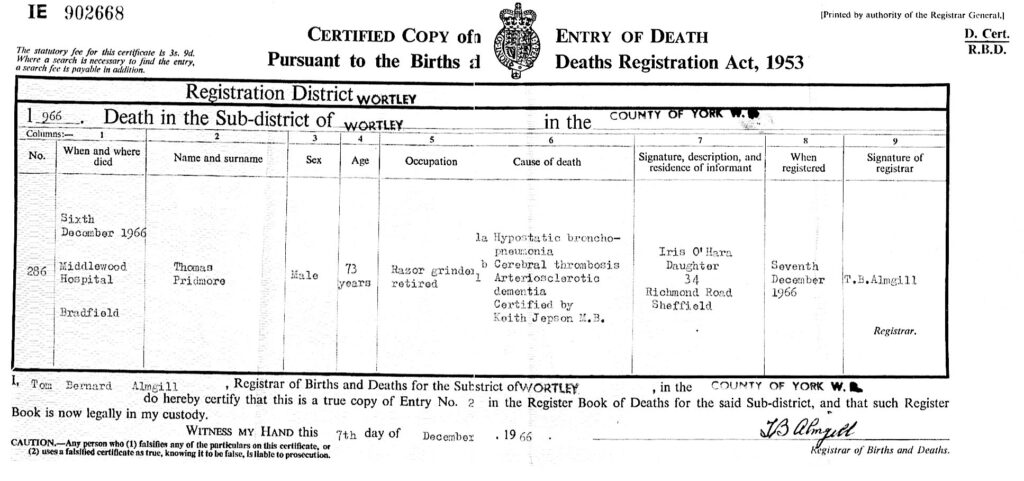 Thomas Pridmore 1966 Sheffield
Thomas Pridmore 1966 Sheffield
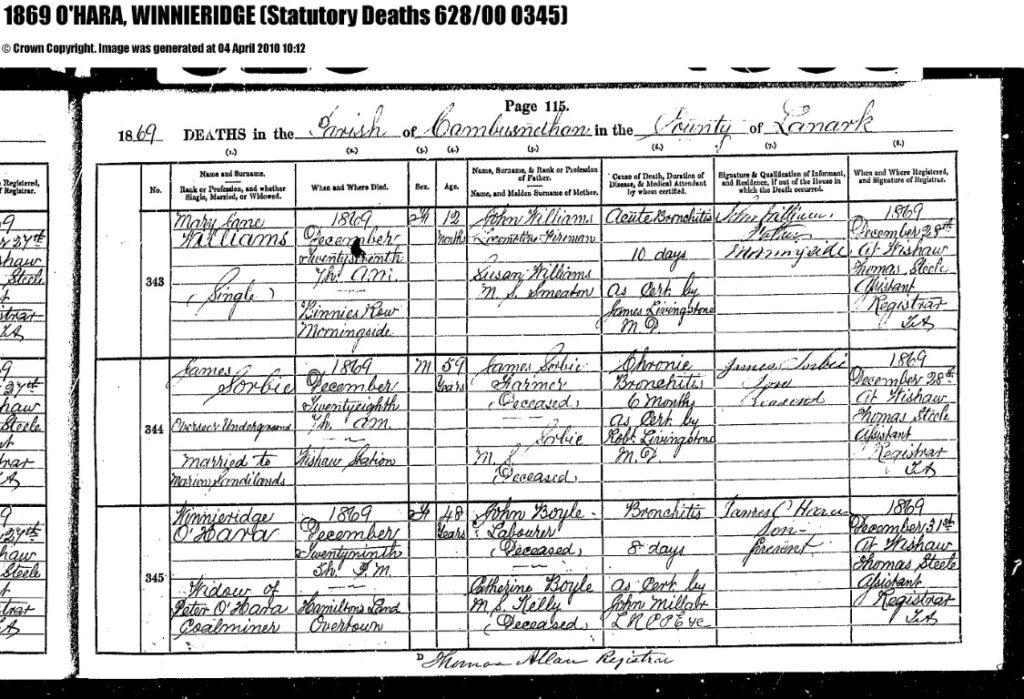 Winifred O’Boyle 1869 Overtown
Winifred O’Boyle 1869 Overtown
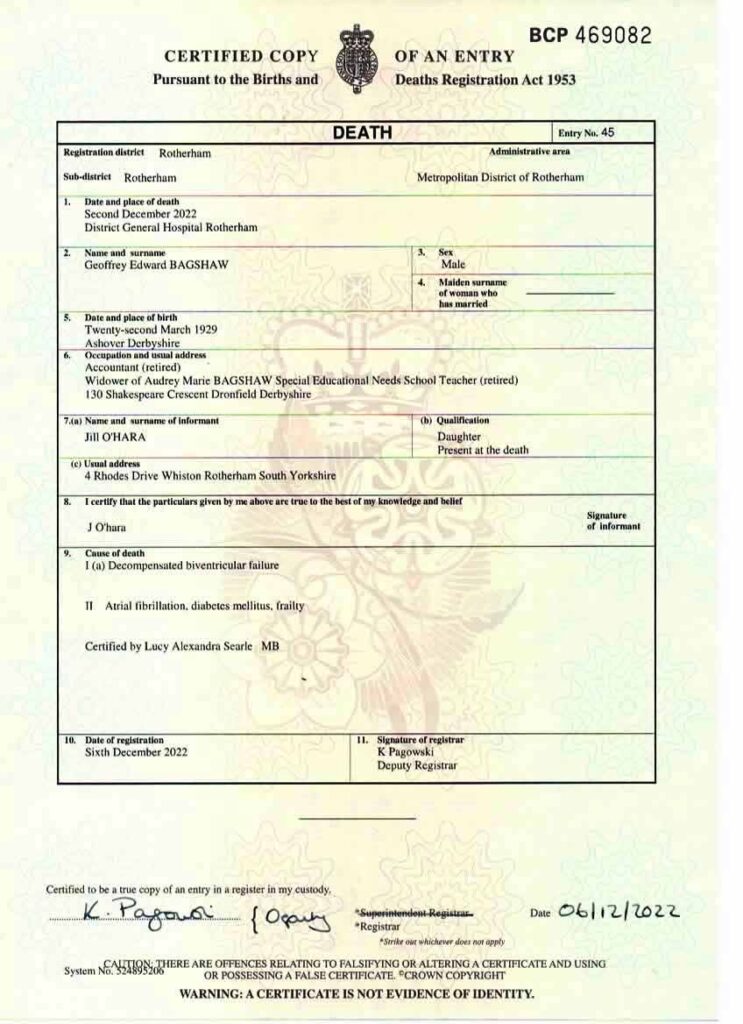 Geoffrey Edward Bagshaw
Geoffrey Edward Bagshaw
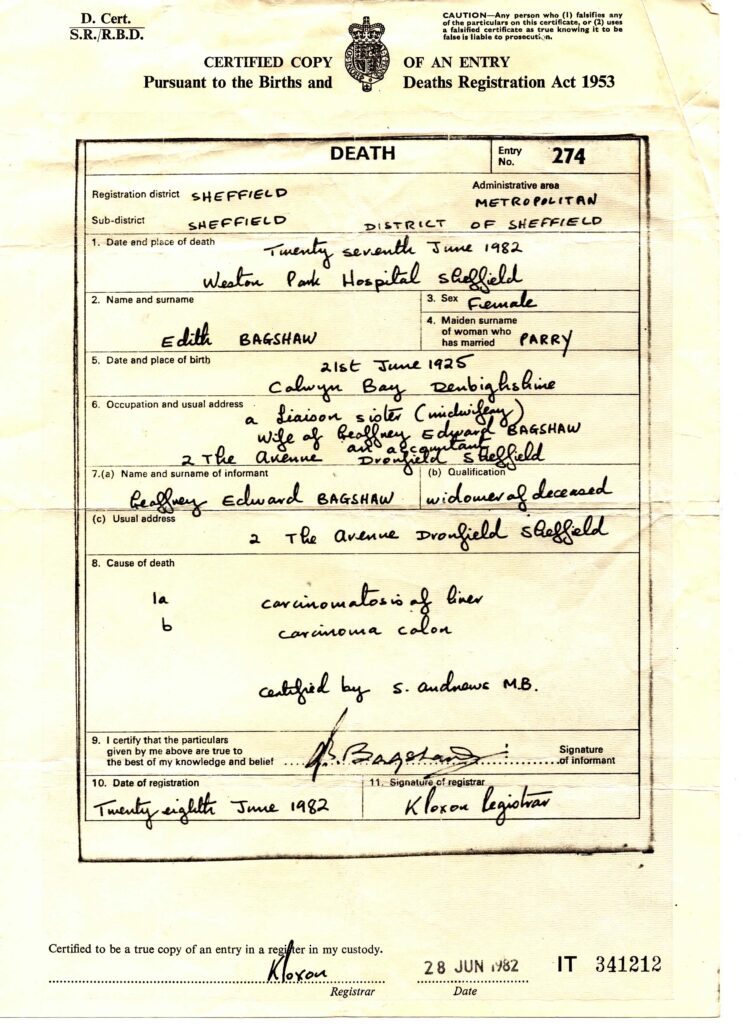 Edith Parry 1982
Edith Parry 1982
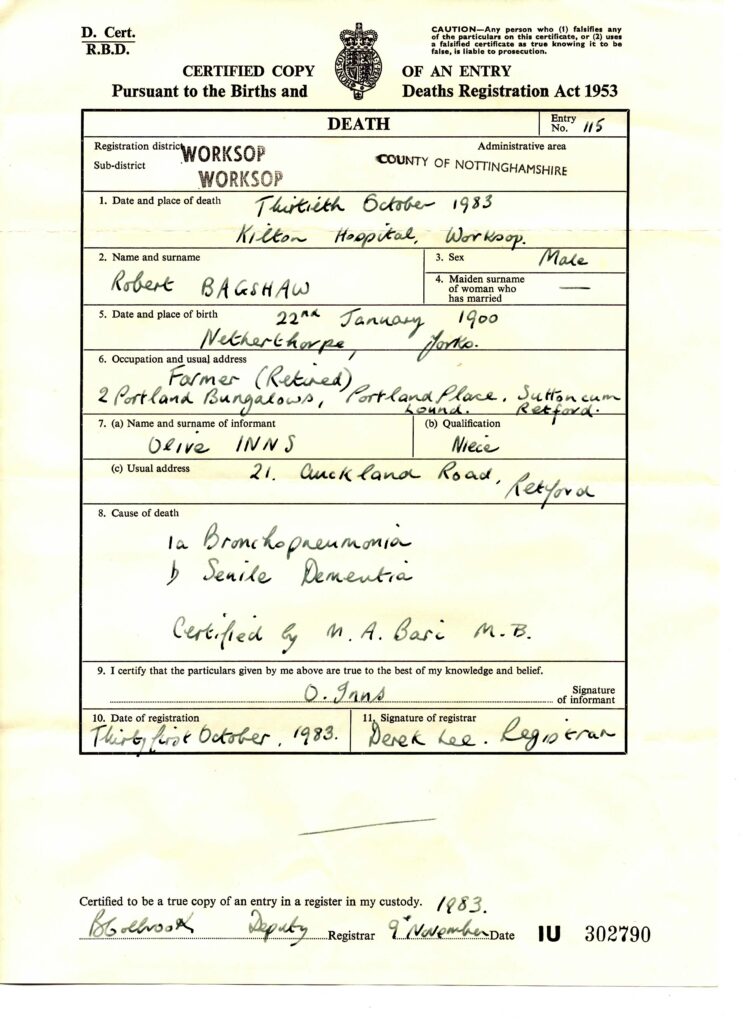 Robert Bagshaw 1983
Robert Bagshaw 1983
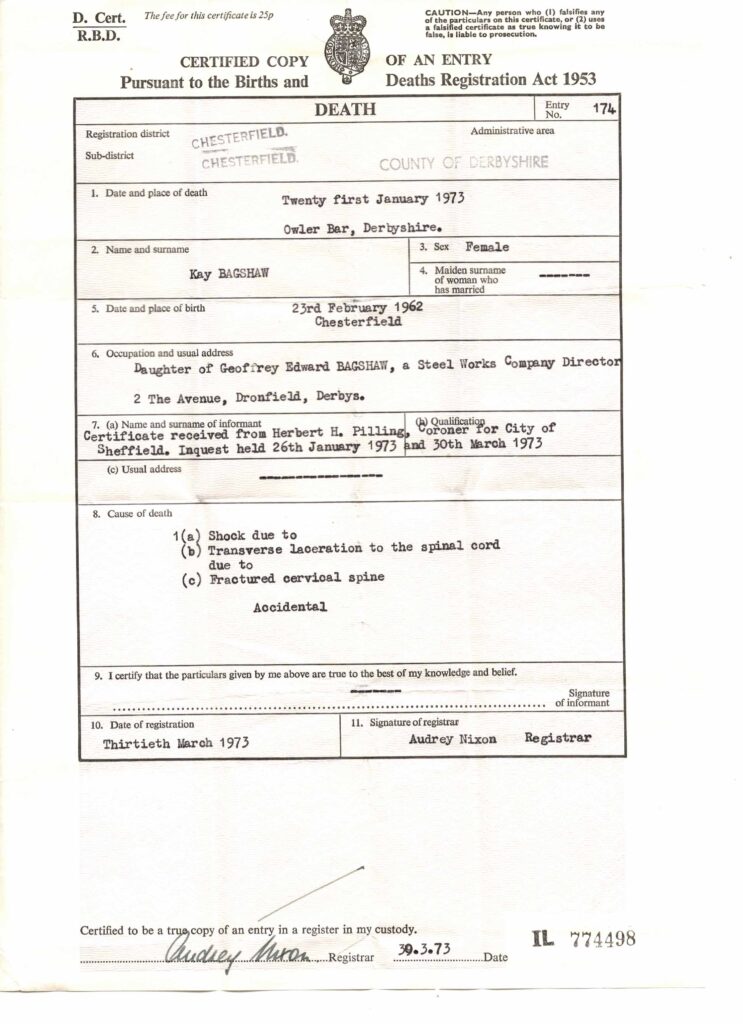 Kay Bagshaw
Kay Bagshaw
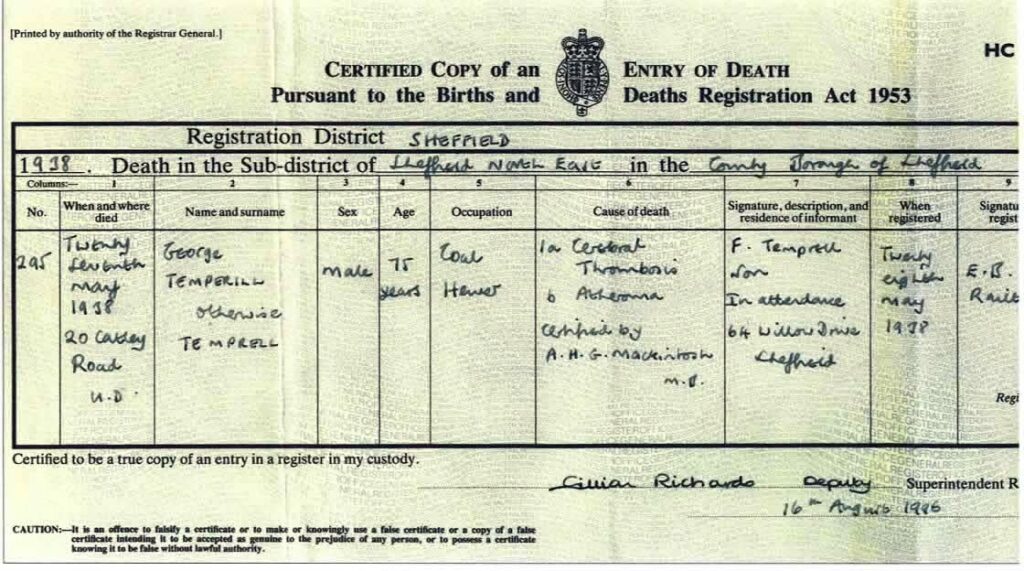 George Temprell Death Cert
George Temprell Death Cert
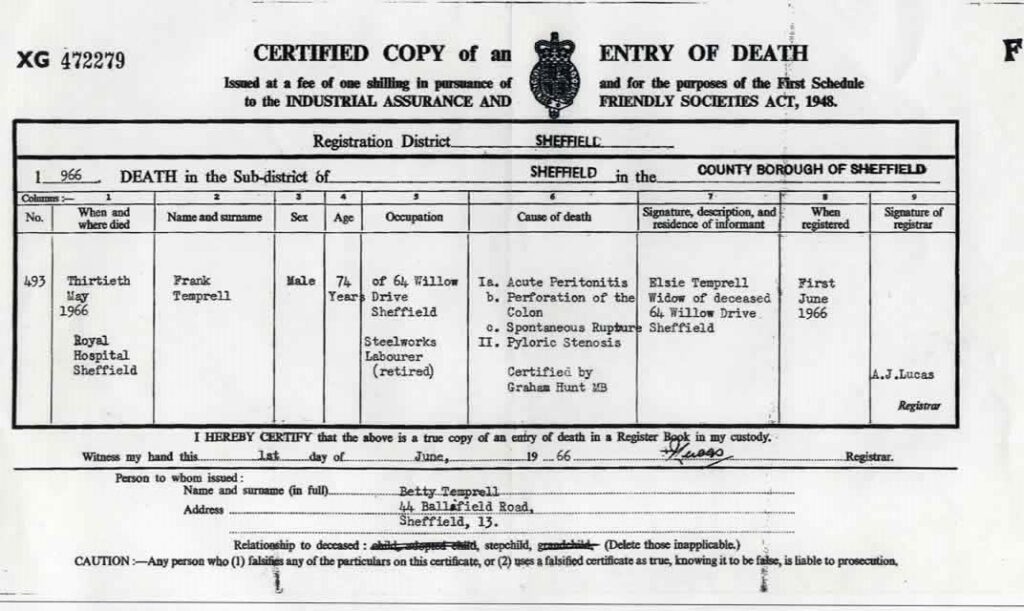 Frank Temprell Death Cert
Frank Temprell Death Cert
 Henrietta Jones Death Cert
Henrietta Jones Death Cert
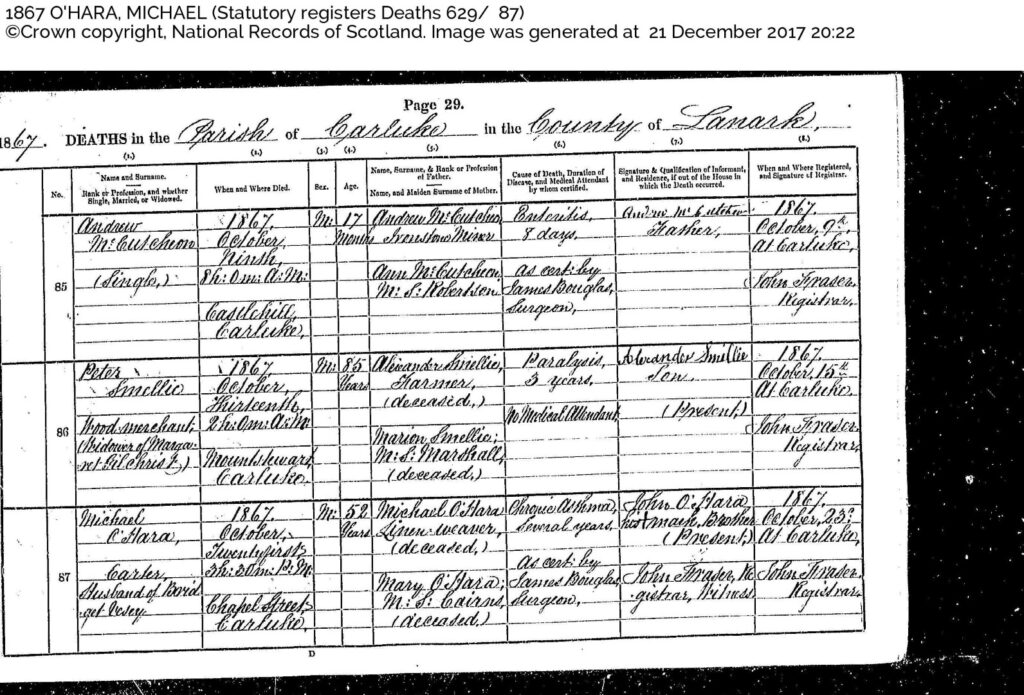 Michael O’Hara Death 1867
Michael O’Hara Death 1867
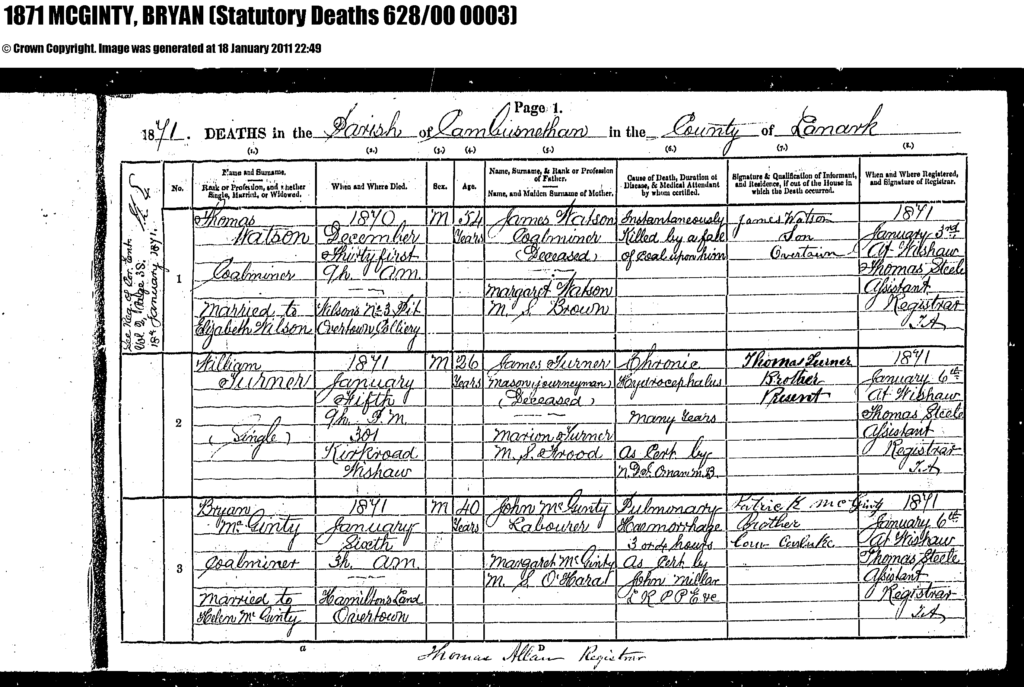 Bryan McGinty death
Bryan McGinty death
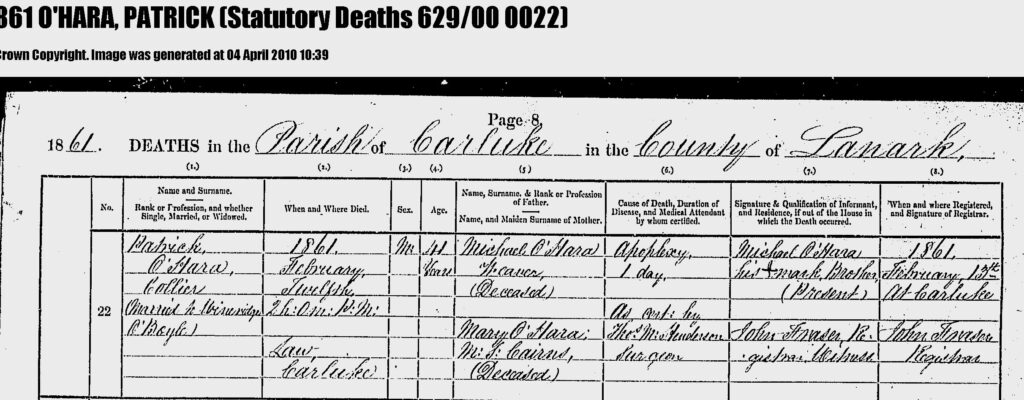 Peter Patrick O’Hara Death 1861
Peter Patrick O’Hara Death 1861
 Ann Johnston Death 1861
Ann Johnston Death 1861
 Patrick O’Hara Death Certificate 1892
Patrick O’Hara Death Certificate 1892
 Robert O’Hara Death 1884
Robert O’Hara Death 1884
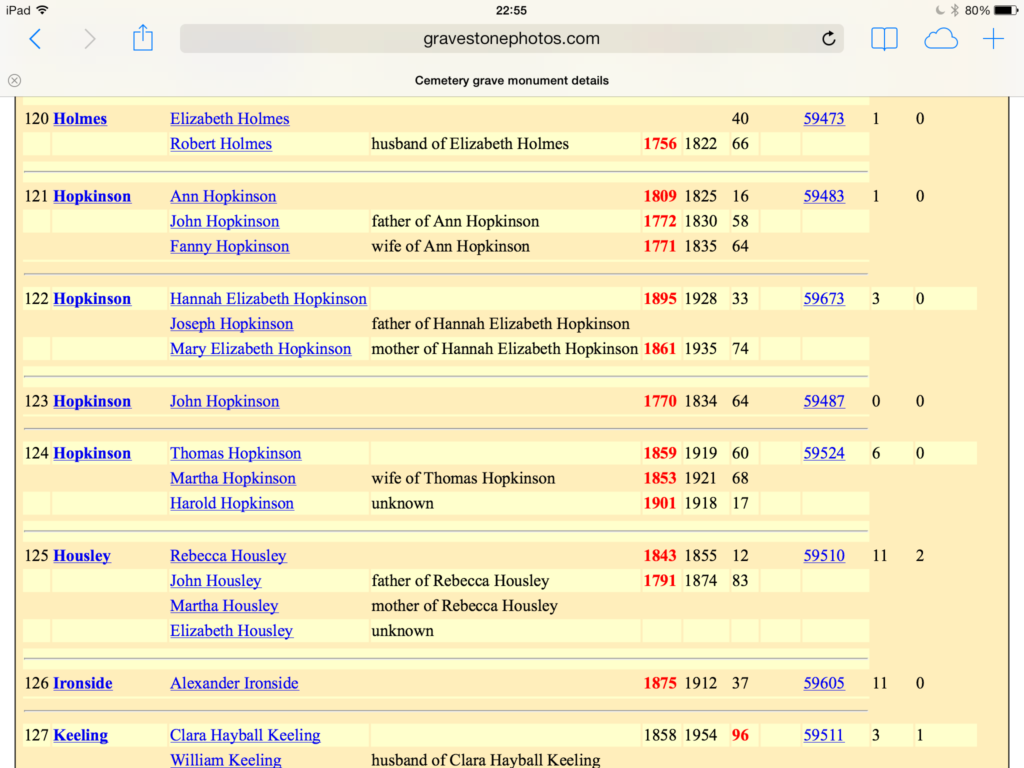 Hopkinson Graves records
Hopkinson Graves records

Copyright
Copyright Chris and Jill O’Hara 2022